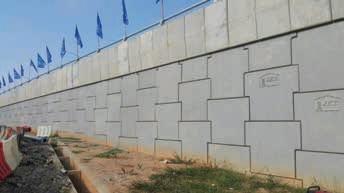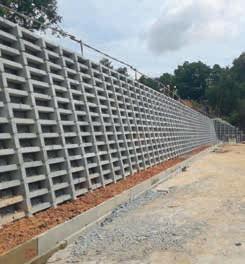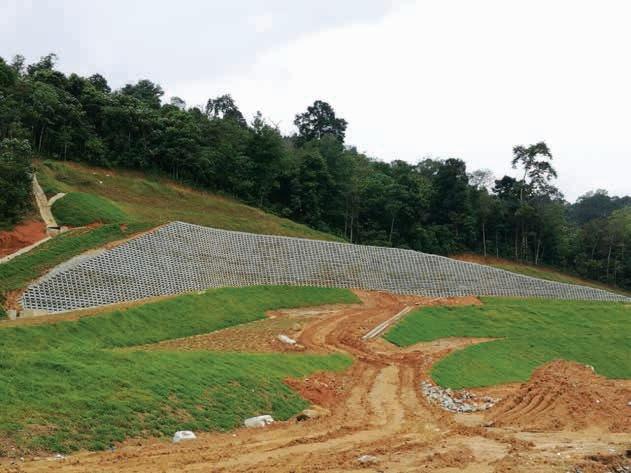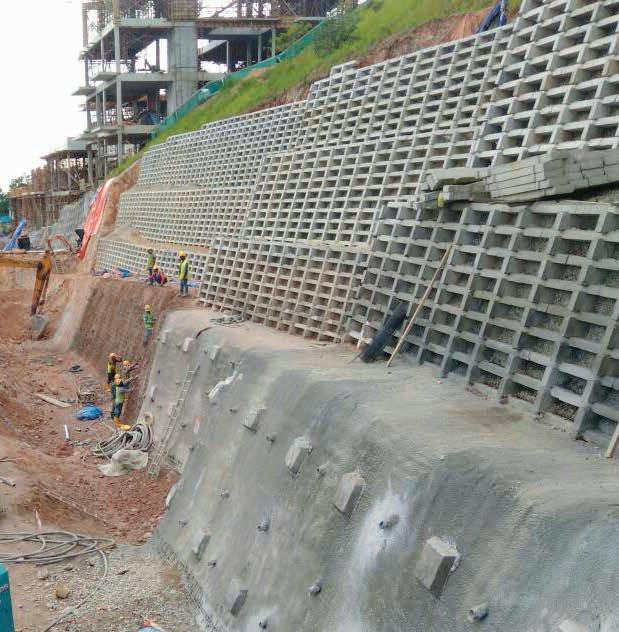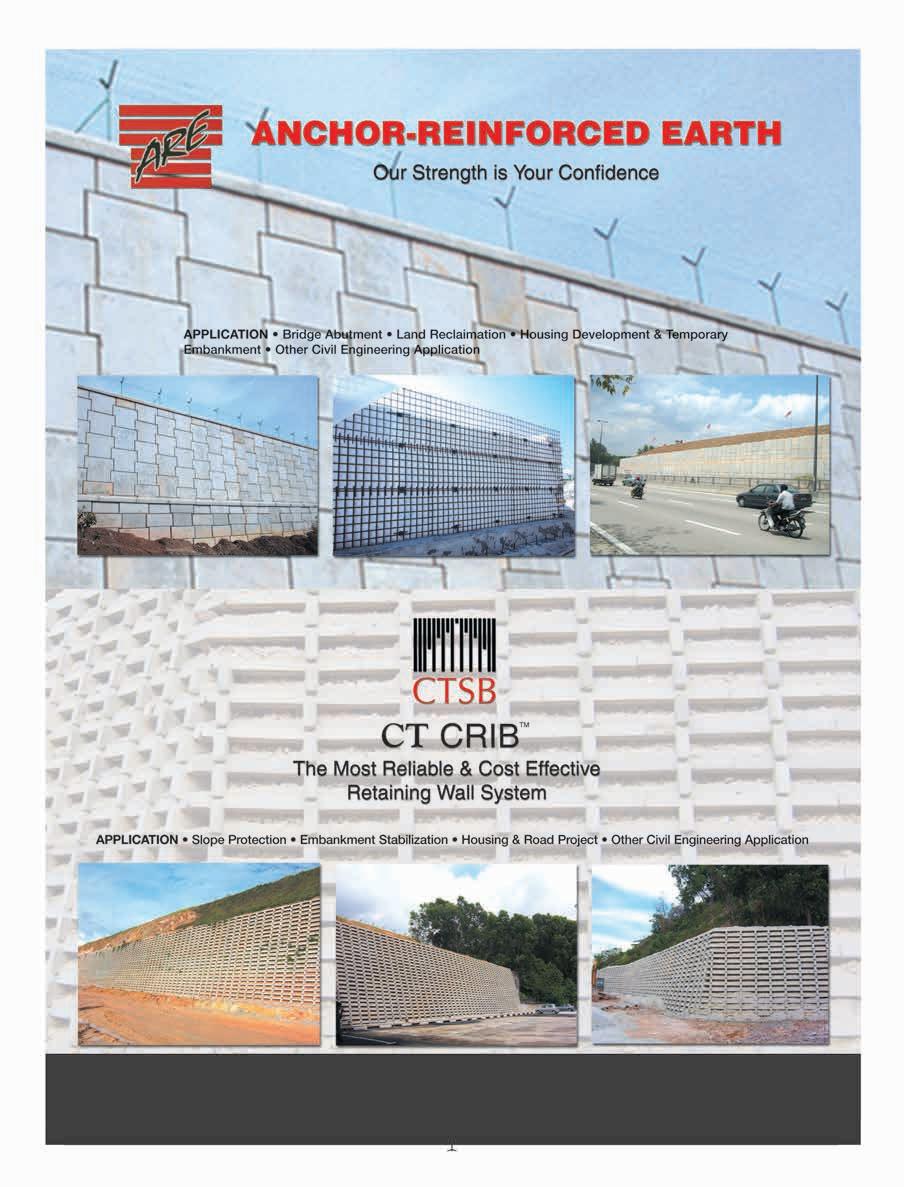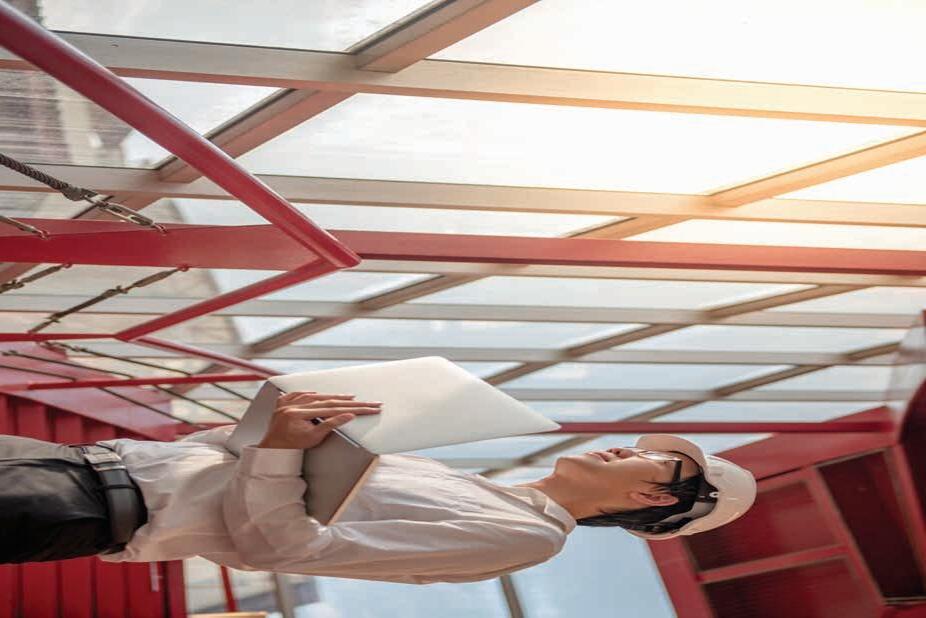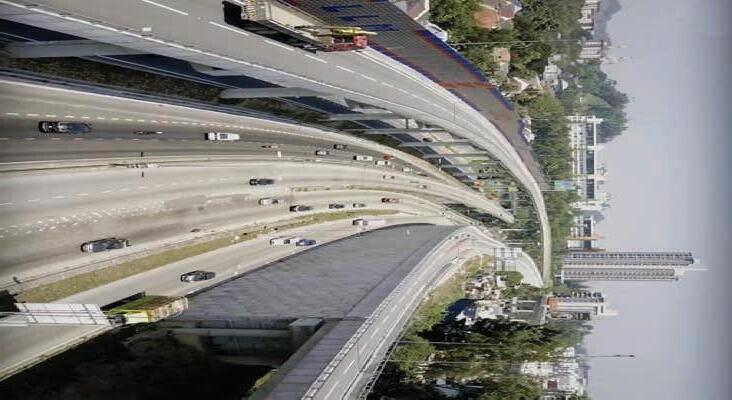




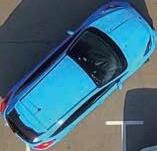




















F lyer / Lea f le t Art P aper (F ull Color )
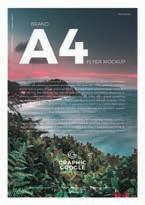
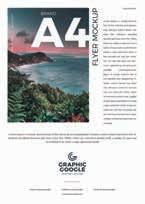


500pc s RM130 1000pc s RM160 A4 105 g sm 500pc s RM160
s RM190 128 g sm
s RM130 A5 105 g sm
s RM100
s RM160 128 g sm
s RM130
Bus iness Card - 54mm x 90m m
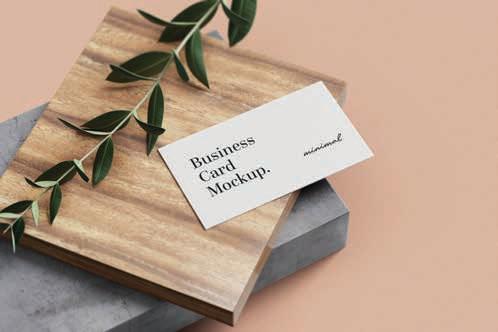
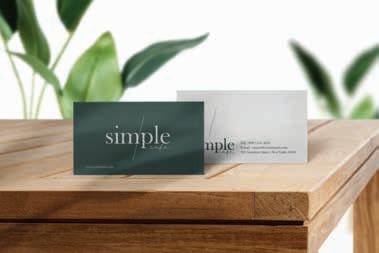


MAJLIS BAGI SESI 2021/2022 (IEM COUNCIL SESSION 2021/2022)
YANG DIPERTUA / PRESIDENT
Ir. Ong Ching Loon
TIMBALAN YANG DIPERTUA / DEPUTY PRESIDENT
Ir. Prof. Dr Norlida bt Buniyamin
NAIB YANG DIPERTUA / VICE PRESIDENTS
Y.Bhg. Dato’ Ir. Ahmad Murad bin Omar, Ir. Mohd Aman bin Hj. Idris, Ir. Yau Chau Fong, Ir. Chen Harn Shean, Ir. Prof. Dr Leong Wai Yie, Ir. Mohd Khir bin Muhammad, Ir. Prof. Dr Ruslan bin Hassan
SETIAUSAHA KEHORMAT / HONORARY SECRETARY
Ir. Dr David Chuah Joon Huang
BENDAHARI KEHORMAT / HONORARY TREASURER
Ir. Fam Yew Hin
BEKAS YANG DIPERTUA TERAKHIR / IMMEDIATE PAST PRESIDENT Ir. David Lai Kong Phooi
BEKAS YANG DIPERTUA / PAST PRESIDENTS
Y.Bhg. Academician Tan Sri Datuk Ir. (Dr) Hj. Ahmad Zaidee bin Laidin, Ir. Dr Tan Yean Chin, Y.Bhg. Dato’ Paduka Ir. Keizrul bin Abdullah, Y.Bhg. Academician Tan Sri Dato’ Ir. Prof. Dr Chuah Hean Teik, Y.Bhg. Dato’ Ir. Lim Chow Hock
WAKIL AWAM / CIVIL REPRESENTATIVE
Ir. Yap Soon Hoe
WAKIL MEKANIKAL / MECHANIC AL REPRESENTATIVE
Ir. Dr Aidil bin Chee Tahir
WAKIL ELEKTRIK / ELECTRICAL REPRESENTATIVE
Ir. Francis Xavier Jacob
WAKIL STRUKTUR / STRUCTURAL REPRESENTATIVE
Ir. Gunasagaran Kristnan
WAKIL KIMIA / CHEMICAL REPRESENTATIVE
Ir. Dr Chong Chien Hwa
WAKIL LAIN-LAIN DISPLIN / REPRESENTATIVE TO OTHER DISCIPLINES
Ir. Dr Bhuvendhraa Rudrusamy
WAKIL MULTIMEDIA DAN ICT / ICT AND MULTIMEDIA REPRESENTATIVE
Ir. Jeewa Vengadasalam
WAKIL JURUTERA WANITA / WOMEN ENGINEERS REPRESENTATIVE
Ir. Noorfaizah Hamzah
WAKIL BAHAGIAN JURUTERA SISWAZAH / YOUNG ENGINEERS SECTION REPRESENTATIVES
Mr. Kuugan Thangarajoo, Mr. Lim Yiren, Mr. Naveen Kumar, Ms. Tan Wen Jia, Ms. Jacquelyne Anne Boudeville
AHLI MAJLIS / COUNCIL MEMBERS
Ir. Dr Tan Kuang Leong, Ir. Mah Siew Kien, Y.Bhg. Dato’ Ir. Mohd Azmi bin Ismail, Ir. Ng Yong Kong, Ir. Dr Mui Kai Yin, Y.Bhg. Dato’ Ir. Noor Azmi bin Jaafar, Ir. Ting Chek Choon, Ir. Sukhairul Nizam bin Abdul Razak, Ir. Lai Sze Ching, Y.Bhg. Dato’ Ir. Dr Ahmad Anuar bin Othman, Ir. Dr Chan Swee Huat, Ir. Ellias bin Saidin, Ir. Mohd Radzi bin Salleh, Dato’ Ir. Hj. Anuar bin Yahya, Ir. Dr Teo Fang Yenn, Ir. Prof. Dr Jeffrey Chiang Choong Luin Ir. Dr Siti Hawa bt. Hamzah, Ir. Prof. Dr Tan Chee Fai, Ir. Mah Way Sheng, Ir. Prof. Dr Zuhaina binti Zakaria, Ir. Lee Cheng Pay, Ir. Dr Kannan a/l M. Munisamy, Ir. Dr Siow Chun Lim, Ir. Wong Chee Fui, Ir. Dr Hum Yan Chai, Ir. Tiong Ngo Pu AHLI MAJLIS / COUNCIL MEMBERS BY INVITATION
Ir. Yam Teong Sian, Ir. Gopal Narian Kutty, Ir. Sundraraj a/l Krishnasamy PENGERUSI CAWANGAN / BRANCH CHAIRMAN
1. Pulau Pinang: Ir. Bernard Lim Kee Weng
2. Selatan: Ir. Wong Yee Foong
3. Perak: Ir. Loh Ban Ho
4. Kedah-Perlis: Ir. Mohamad Shaiful Asrul bin Ishak
5. Negeri Sembilan: Ir. Chong Chee Yen
6. Kelantan: Ir. Shaipuddin bin Shapii
7. Terengganu: Y.Bhg. Dato’ Ir. Wan Nazri bin Wan Jusoh
8. Melaka: Ir. Puvanasvaran a/l Perumal
9. Sarawak: Y.Bhg. Dato’ Ir. Janang Anak Bongsu
10. Sabah: Ir. Jeffrey Ng Vun Ping
11. Miri: Ir. Wong Siong Ung
12. Pahang: Ir. Ahmad Kamal bin Kunji
AHLI JAWATANKUASA INFORMASI DAN PENERBITAN/ STANDING COMMITTEE ON INFORMATION AND PUBLICATIONS 2021/2022
Pengerusi/Chairman: Ir. Prof. Dr Leong Wai Yie Naib Pengerusi/Vice Chairman: Ir. Prof. Dr Zuhaina binti Zakaria Setiausaha/Secretary: Ir. Dr Hum Yan Chai Ketua Pengarang/Chief Editor: Ir. Prof. Dr Leong Wai Yie Pengarang Prinsipal Buletin/ Principal Bulletin Editor: Ir. Prof. Dr Zuhaina binti Zakaria Pengarang Prinsipal Jurnal/Principal Journal Editor: Ir. Dr David Chuah Joon Huang
Pengerusi Perpustakaan/Library Chairman: Ir. Dr Kannan a/l M.Munisamy
Ahli-Ahli/Committee Members: Ir. Ong Guan Hock, Ir. Yee Thien Seng, Ir. Chin Mee Poon, Ir. Dr Oh Seong Por, Dr Sudharshan N. Raman, Ir. Dr Lai Khin Wee, Ir. Tiong Ngo Pu, Ir. Dr Lee Tin Sin, Ir. Yap Soon Hoe, Ir. Dr Teo Fang Yenn, Ir. Dr Bhuvendhraa Rudrusamy, Ir. Tiong Ngo Pu, Ir. Lau Tai Onn, Ir. Yee Thien Seng, Ir. CMM Aboobucker, Mr. Muhd Ashiq Marecan bin Hamid Marecan
LEMBAGA PENGARANG/EDITORIAL BOARD 2021/2022 Ketua Pengarang/Chief Editor: Ir. Prof. Dr Leong Wai Yie Pengarang Prinsipal Buletin/ Principal Bulletin Editor: Ir. Prof. Dr Zuhaina binti Zakaria Pengarang Prinsipal Jurnal/Principal Journal Editor: Ir. Dr David Chuah Joon Huang Ahli-ahli/Committee Members: Ir. Lau Tai Onn, Ir. Ong Guan Hock, Ir. Yee Thien Seng, Ir. Dr Oh Seong Por, Dr Sudharshan N. Raman, Ir. Dr Lai Khin Wee, Ir. Dr Teo Fang Yenn Secretariat: Janet Lim, May Lee
THE INSTITUTION OF ENGINEERS, MALAYSIA Bangunan Ingenieur, Lots 60 & 62, Jalan 52/4, P.O. Box 223, (Jalan Sultan), 46720 Petaling Jaya, Selangor Darul Ehsan. Tel: 603-7968 4001/4002 Fax: 603-7957 7678 E-mail: sec@iem.org.my Homepage: http://www.myiem.org.my
Bacterium Encapsulated in Alginate as A Self-Healing Agent in Autonomous Healing Mortar
in Inevitable
Empowering B40 Communities Through Urban Smart Farming
Community Service Responsibility Collaboration Projects at Kg. Layang-Layang Kanan
IEM - HWUM Student Section Health and Wellness Series Ep1: Taking Relationships to A

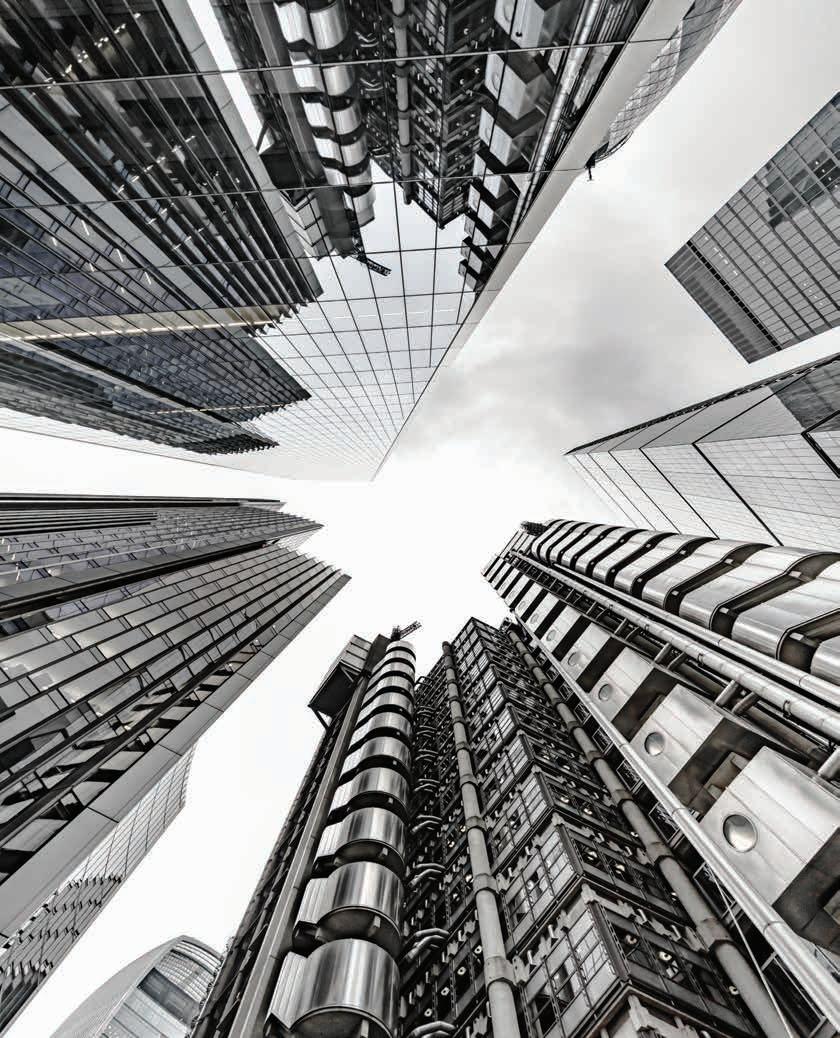
3,200/page RM 3,200/page
Full-Page, Full-Colour Advertisement
This one-time-only special rate o er is for new advertisers.
Space availability is subject to booking on a first-come-first-served basis.
Clients will provide ready-to-print artwork in PDF format with 300dpi.
Full page: 210mm x 285mm, 5mm extra bleed sizes for 4-sided with crop mark.
Advertising space must be utilised before 30 June 2022.
*Please note that the above rate will be subjected to 6% SST. For overseas advertisers, an additional 25% will be charged.
Rate shown above excludes 15% advertising agency commission.
Payment term: Full advance payment.
Artwork submission deadline is on (or before) the 1st week of the prior month of publication. After the material deadline, no cancellation or alteration to the advertisement will be entertained.
Any cancellation after signing the advertising order will result in a 50% penalty charge.
The publisher reserves the right to edit, revise or reject any advertisement deemed unsuitable or inappropriate. •
JURUTERA has an estimated readership of 200,000 professionals. Our esteemed readership consists of certi ed engineers, decision making corporate leaders, CEOs, government o cials, project directors, entrepreneurs, project consultants, engineering consulting rms and companies involved with engineering products and services. Circulation & Readership Pro le
DIMENSION PUBLISHING SDN. BHD. [ 199701034233 (449732-T) ]
Level 18-01-02, PJX-HM Shah Tower, No. 16A, Persiaran Barat, 46050 Petaling Jaya, Selangor Darul Ehsan, Malaysia.
Tel: +(603) 7493 1049 Fax: +(603) 7493 1047
E-mail: info@dimensionpublishing.com
Website: www.dimensionpublishing.com
CHAIRMAN
ROBERT MEBRUER
CEO/PUBLISHER
PATRICK LEUNG
GENERAL MANAGER
SHIRLEY THAM ● shirley@dimensionpublishing.com
HEAD OF MARKETING & BUSINESS DEVELOPMENT
JOSEPH HOW ● joseph@dimensionpublishing.com
PRODUCTION EDITOR
TAN BEE HONG ● bee@dimensionpublishing.com
CONTRIBUTING WRITERS
PUTRI ZANINA ● putri@dimensionpublishing.com
HANNA SHEIKH MOKHTAR ● hanna@dimensionpublishing.com
SENIOR GRAPHIC DESIGNER
SUMATHI MANOKARAN ● sumathi@dimensionpublishing.com
GRAPHIC DESIGNER
SOFIA ● sofia@dimensionpublishing.com
ADVERTISING CONSULTANTS
THAM CHOON KIT ● ckit@dimensionpublishing.com
ACCOUNTS CUM ADMIN EXECUTIVE
YEN YIN ● yenyin@dimensionpublishing.com
For advertisement placements and subscriptions, please contact: DIMENSION PUBLISHING SDN. BHD. [ 199701034233 (449732-T) ]
Level 18-01-02, PJX-HM Shah Tower, No.16A, Persiaran Barat, 46050 Petaling Jaya, Selangor Darul Ehsan, Malaysia. Tel: +(603) 7493 1049 Fax: +(603) 7493 1047 E-mail: info@dimensionpublishing.com
Subscription Department E-mail: info@dimensionpublishing.com
JURUTERA is published and printed monthly by Dimension Publishing Sdn. Bhd.
JURUTERA MONTHLY CIRCULATION: OVER 50,000 MEMBERS
Submission or placement of articles in JURUTERA could be made to the:Chief Editor
THE INSTITUTION OF ENGINEERS , MALAYSIA (IEM) Bangunan Ingenieur, Lots 60 & 62, Jalan 52/4, P.O. Box 223 (Jalan Sultan), 46720 Petaling Jaya, Selangor. Tel: +(603) 7968 4001/4002 Fax: +(603) 7957 7678
E-mail: pub@iem.org.my or sec@iem.org.my IEM Website: http://www.myiem.org.my
© 2020, The Institution of Engineers, Malaysia (IEM) and Dimension Publishing Sdn. Bhd.
PUBLICATION DISCLAIMER
The publication has been compiled by both IEM and Dimension with great care and they disclaim any duty to investigate any products, process, services, designs and the like which may be described in this publication. The appearance of any information in this publication does not necessarily constitute endorsement by IEM and Dimension. There is no guarantee that the information in this publication is free from errors. IEM and Dimension do not necessarily agree with the statement or the opinion expresssed in this publication.
COPYRIGHT
JURUTERA Bulletin of IEM is the official magazine of The Institution of Engineers, Malaysia (IEM) and is published by Dimension Publishing Sdn. Bhd. The Institution and the Publisher retain the copyright over all materials published in the magazine. No part of this magazine may be reproduced and transmitted in any form or stored in any retrieval system of any nature without the prior written permission of IEM and the Publisher.
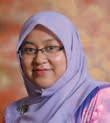
In recognition of International Women’s Day on 8 March, the Women Engineers Section of IEM takes centrestage in this month’s JURUTERA, which highlights topics that affect not just women engineers, but also all engineers.
Despite our lives being severely affected by the Covid19 pandemic and the unfortunate event of recent floods, Malaysians have shown we have the capacity to adjust to the circumstances with our technical competencies to adapt and the capacity to innovate so as to be able to overcome these adversities.
Both scientific and social science knowledge are topics of debate in many organisations, in terms how much damage is acceptable during an extreme event. This is where engineering resilience is heavily related to scientific countermeasures. When engineers nurture a resilient future, we embrace details of safety and the application of scientific knowledge to enhance our lifestyles to our mental health and build talent in the future generations.
As engineers anticipate complexities and adversities, having a resilient mindset overcomes all these to let us look towards the future, from broken, damaged machine parts to overwhelmed workers in industry and increasing market pressure.
In the movie Apollo 13, one of the most famous quotes is “Failure is not an option”. However, in real life, failure is sometimes inevitable since there is always the possibility of things not going as planned, especially with growing systems complexity and dependency on third-party vendors. This is where resiliency, the act of bouncing back to solve the situation, comes into action.
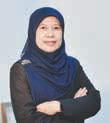
This month, JURUTERA focuses on resilience which, either way, is required in engineering processes as well as is one of the critical skills for all engineers. With a resilient mindset, we can learn from mistakes and move forward. This will help us build up our inner strength and boost confidence in our life. On behalf of the Editorial Board, I hope that you will enjoy reading this issue and please stay safe and healthy during this Omicron wave.


Written and Prepared by: Ir. Assoc. Prof. Dr Zahiraniza binti Mustaffa
Ir. Mah Siew Kien
Ms. Michelle Lau
Ms. Choong Pooi Ying
What is resilient? According to the Cambridge Dictionary, resilient is defined as “able to improve quickly after being hurt or being ill” or “able to return quickly to a previous good condition after problems”. Depending on the context, the word resilient can have different interpretations and yet be appropriate to the subject.
Engineering, one of the oldest and most noble professions in the world, is still highly relevant and humanity continues to depend on it every day. Without engineers bringing to life the various technologically advances and innovative solutions, we will not see progress and lifesaving innovations which have contributed to and are still contributing in the fight against Covid-19. These include improvised ventilators, testing booths and robots that assisted Covid patients.
On a more basic note, engineers working in the utilities sector ensure the nation is supplied with electricity, clean water, telecommunication services, logistics and the ever-important medical equipment, enabling all of us to stay safe at home and in comfort.
For the last 2 years, the Covid-19 pandemic almost brought the world to a standstill. It affected countless individuals, businesses and organisations. Due to the sudden negative socioeconomic effect worldwide, businesses and organisations experienced a sudden downfall in income, causing them to operate as lean as possible. Globally, this has resulted in downsizing and retrenchment. Many individuals lost their jobs (and thus their source of income) and some even lost their sense of self-worth.
Because of the lack of physical contact and engagements, families and loved ones were not able to meet for extended periods and this caused emotional distance and relationship despair; students could not attend physical classes and colleagues could not discuss work matters in the meeting room. The new norm forced us to stare at the computer screen more than ever, removing the human touch in communication.
Is there a way to mitigate these new norm problems? All individuals, businesses and organisations should engineer a resilient future. Why? This is to ensure they will be able to face the post-pandemic era with a sense of control, problem solving abilities, strong social connections and, more importantly, survival mentality. Resilient individuals are aware of situations, their own emotions and the behaviour of people around them. They will grow stronger in the face of adversity. In the context of a business or organisation, being resilient means the company will be able to endure any economic downfall and be agile in adapting to new business management models that will benefit everyone, from motivating employees in ways they can contribute and providing job security to innovation and new processes to stay afloat and sustainable.
In this article, we will look at the viewpoints of three different individuals in the context of Engineering a Resilient Future.
Trust management is the key to a resilient future. It revolves around who to trust and what to trust and both must coexist. Why is trust management so important? It is the process in which both employer and employee have a strong and steadfast relationship built on trustworthiness and this enables both parties to work together comfortably and confidently towards common goals.
The nature of trust in an organisation stems from an individual’s personality traits and it ties in with an individual’s attributes, which comprise integrity, responsibility and accountability. Human resource has always preached about the importance of having an allrounded and diverse team as a combination of different individuals will encourage and empower teams to be open minded and to adopt to changes. By understanding and leveraging on the psycho-sociometry of individuals involved in its operations, a business or organisation can fully unleash the true potential and passion of its employees while ensuring the best for the organisation at the same time.
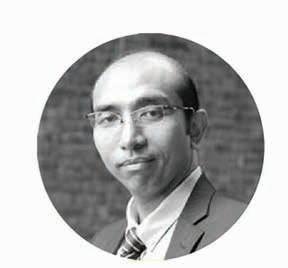
adequately compensated and a platform provided for them to unleash their potential. We must realise that the new generation workforce today demands better work-life balance, reasonable standards of living and opportunities to develop themselves. But life is a two-way street and this should not be the reason for employees to demand excessive compensation and leeways in terms of empathy which, in the end, can lead to pathetic results for the ultimate end users or clients.
Everyone is a stakeholder, one way or another. A balance of all perspectives, from technological ideas to basic necessities, expectations from one party to another and empathy towards the end users are critical as all these factors can balance out trust management within an organisation to ensure resilience in the marketplace. Finally, we should also be clear on the initiative, capabilities, experience, skill sets and, most importantly, the ability to create value of our self-worth, while being compensated for our contributions.
Dr Rahmat Shazi, Technology Director of ShazInnovation Solution, says: “One thing about engineering is that it creates value, not only for those who benefit from the output, but also the people executing the deliverables that bring the said value. It is a discipline that refines one’s cognitive skills, develops relational skills needed to extract value from ideas and, of course, creates a society that can take that idea further. Alas, the latter can only be built if relational skills are based on benevolent objectives and integrity. And therein lies the deficit today. Do engineers of today and the future understand that they need to empathise with end users of their deliverables?”
Be it engineers or anyone else, we all need to be open minded and to be able to accept criticism and to reflect on the criticism. At the same time, managers need to be able to put aside their egoistic personality and accept that they are not always right, just because they are older in age or have seniority.
To develop a resilient culture, everyone should adopt an open-minded approach and embrace the differences of each individual team member in order to cultivate a strong team. This dynamics and provides psychological safety in the team and members can share their true emotions without being judged or be labelled weak. In the end, everyone involved benefits as all will be open enough to share their plans and thoughts without fear.
It cannot be denied that the Maslow’s hierarchy of needs is also an imperative factor in talent retainment. To retain talent in an organisation, employees should be
Engineers are very susceptible to stress as the nature of our job requires precision, professionalism and accountability. In addition, engineers are mid-level managers who are answerable to the management team and, at the same time, they are also required to manage the skilled workforce. Working in such highly stressful environments, engineers should be well aware of and be willing to embrace their true emotions.
Subconsciously, we may feel vulnerable when having to express our true emotions to others. In reality, there is nothing to feel bad about being frustrated, depressed, overwhelmed, etc. as we are all humans who have our own challenges in life, family, career, stability and social status. These worries may manifest into emotions that are hard to suppress, but these are better off when unleashed in a correct manner so that we can release our built-up stress and tension. By learning to embrace our emotions and vulnerability, we will acquire the confidence to find a safe space to open up, recover and to build greater mental resilience.
In a male-dominated profession, it cannot not be denied that there will be some form of hindrance when a male professional has to report to a female superior, be it in terms of emotion, attitude and/or even the feeling of inferiority. This should not be the case as, regardless of gender, we should always remain professional; always keep in mind that this is the engineering profession and what determines our success is our technical knowledge and capabilities, paired with management and leadership skills.
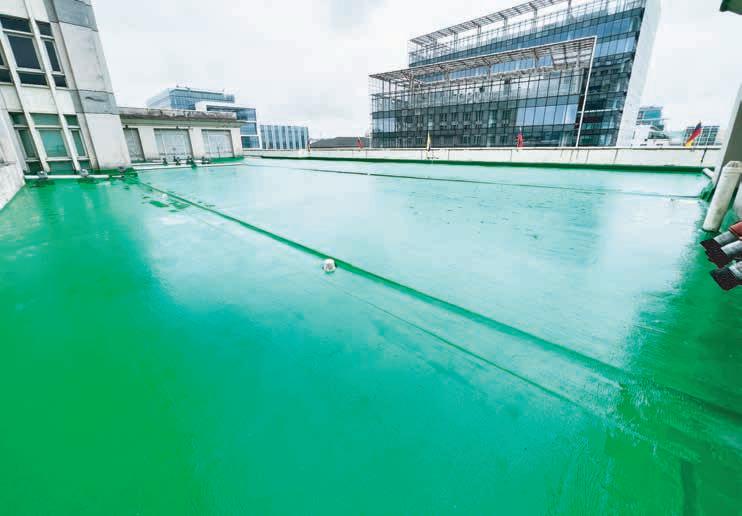
The very closed and traditional mindset of a seniority structure in which the senior is always right, should also be revoked. Junior professionals should be empowered with the self-confidence to voice their concerns, views and opinions freely without having to worry about backlashes or other unrelated consequences. Don’t forget that the younger generation is a pool of future leaders, so they should be groomed to lead and voice out their concerns and opinions for the betterment of the industry. In fact, humans from all walks of life should act with complete professionalism, integrity, responsibility and accountability.
Channels for obtaining professional assistance with regards to mental wellbeing can be found easily online, thanks to the improvement of connectivity. Many organisations offer their services online and engaging professional help will enable us to understand the true cause of our emotions and thus resolve the issue. In addition, it is organisations like these that serve as the intermediatory link or the outlet for us to voice out our thoughts to a professional. This then allows our mind to be “free” which will lessen the burden for us to unleash our creative side.
“We are all resilient from the day we are conceived. Some of us thrive and are able to manage very well; others may take a longer time to do so and there are also those who don’t. Emotion and intelligence goes hand in hand; it is the core of being human. Applying EQ resilience to lead and utilising your IQ to up skills, is the way towards better resilience,” says Dr Sangeeta Kaur, Managing Director of Emerging Journey Asia.
“A holistic approach to emotional and mental wellbeing is part of growth and development. There are times when we are required to lead by the heart instead of technical intelligence (bear in mind that human are not robots) or what we think is right. A balance of both mental and emotional states is critical for overall wellbeing.”
to be an accomplished engineer, some of us may even start filling in job applications before we sit for our last paper in the examinations. The lucky few who have managed to secure full-time positions even before the final week of lectures have ended, will be looking forward to joining the workforce with vigour and passion as well as dreams to doing good engineering work for the benefit of mankind. Unfortunately, barely weeks into their new career, Covid-19 wreaked havoc throughout the globe and everything came to a standstill. Everyone was instructed to work from home and fresh graduates who had just entered the industry and perhaps had not even had the time to get acquainted with their fellow colleagues, would have felt bleak and lonely as they struggled to cope with working from home in full virtual mode as well as learn new technical jargons and concepts on their own. It would seem that all hopes for a successful career were dashed.
Not quite. Ms. Choong Pooi Ying, a young, enthusiastic, resourceful and open-minded engineer, refused to overworry or complain as doing so would not solve the issues. A growth mindset is most important when facing tough circumstances. By adopting a growth mindset, we can focus on finding the means to develop and improve such as trying new challenges and accepting feedback and criticism. This ties in with engineering a resilient future as we will continuously improve ourselves and find the best mean to survive.
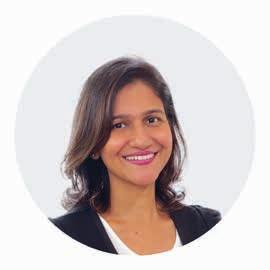
Humans are social creatures and from early childhood, our education system is based on a face-to-face arrangement in which we get to meet our classmates and teachers physically in classrooms. As we move on to higher education, we learn through group projects and holding discussions with one another. All these work to help prepare us for the time when we will be entering the workforce.
Communication and teamwork are just the basic necessities required for us to be an all-rounder in this next stage of our life. As we near graduation, we look forward to entering the industry. Armed with high hopes and the goal
To be prepared to enter the industry/ workforce, we should ask ourselves questions such as “What do we really want to accomplish in life?”, “What kind of future do we envision for ourselves?”, “What kind of self are we are trying to develop?” and “Do we aspire to be an accomplished engineer who brings benefits to mankind?”.
It is by having clear objectives and a strong sense of belonging that budding engineers can plan their career and personal development even before graduation. To achieve these, they can look to seeking ideas and guidance from seniors or peers and even having a mentor in the industry discipline that they are interested in who can guide them towards achieving their objectives. With proper guidance, these budding engineers can start their journey towards professional registration and competency certification.
Engineering graduates who wish to practise in Malaysia should also be aware that it is mandatory to first register with the Board of Engineers Malaysia (BEM) as a Graduate Engineer. On top of that, it is vital that you read, digest, understand, then practice in accordance with the Registration of Engineers Act 1967 and Engineer’s Code of Conduct (CoC) as these serve as a guideline for becoming
ethical and competent engineers. All these indicate our commitment to the engineering fraternity and, at the same time, will enhance our value and demonstrate competency.
Learning from mistakes and a willingness to admit to mistakes are also a must in the industry. Put aside your ego. For newcomers to the industry, your team members at all levels, including technicians and skilled workers, will be your best teachers at the workplace. You may be a graduate with an engineering degree but you are not yet furnished with the technical skills and knowledge; these can only be acquired through working hands-on in the job.
Learn to accept criticism, take the initiative to ask questions and perform tasks humbly. This way, you will find that you are able to pick up technical skills and knowledge faster. On a side note, fresh graduates must also understand that although it is good to do as many tasks as possible in order to learn as fast as possible, you must also know your own limitations and capacities as some tasks may require a competency licence; furthermore, too much work may lead to pre-mature burnout which will be detrimental to your health, physically and mentally.
The key to building resilience is to have a clear objective on why and what you are working towards, a balanced lifestyle, the constant desire to improve and knowing when to take a break when it’s required.
• Adopt a growth mindset
• Find your inner resolve
• Have clear career and personal development goals and objectives
• Always seek advice and guidance from others
• Register with the mandatory - statutory authority (i.e.: Board of Engineers Malaysia or BEM)
• Don’t be afraid to make mistakes and to learn from them
• Put aside ego and learn from everyone
• Take a break whenever you feel you need a break!
• Don’t be complacent
After considering the views of three individuals in different career levels and roles, we can see that to be resilient is not only about ourselves but it’s also about others around us. Resilience does not apply only to engineers but it is also a general outlook for all of us. Resilience not only builds the engineering fraternity, but it is also the backbone in building the nation as a whole!
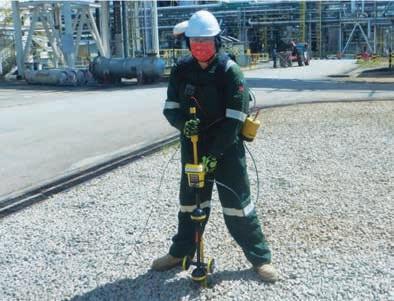
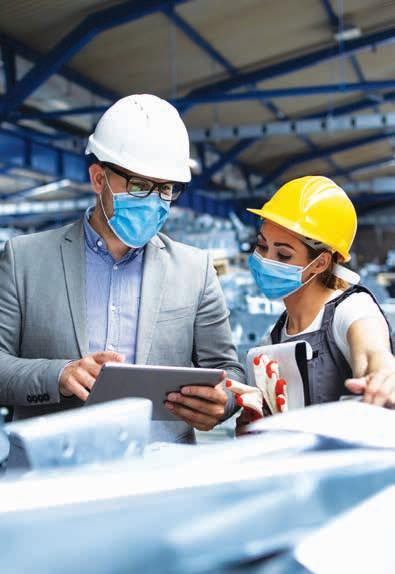
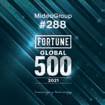
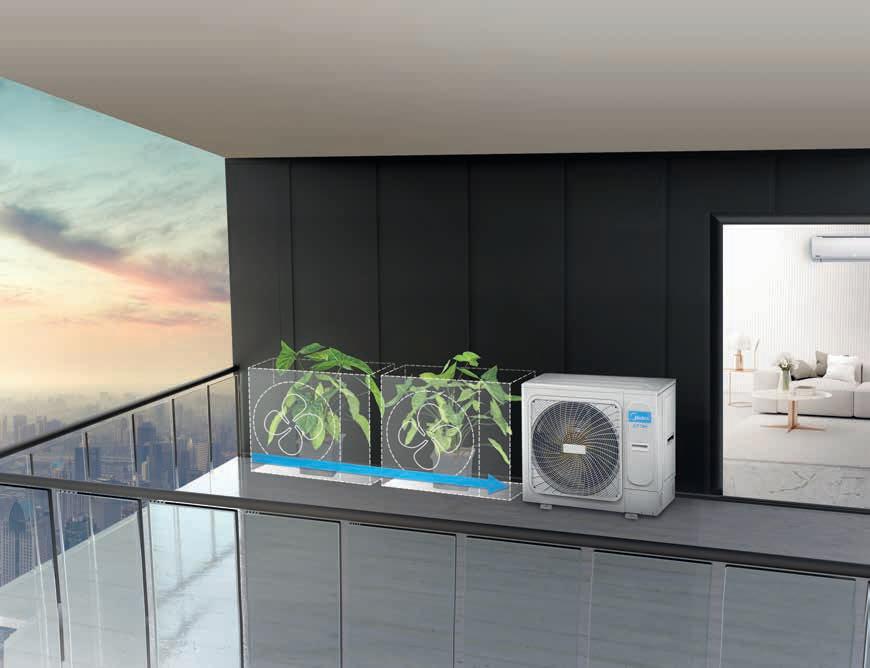



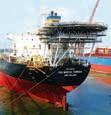
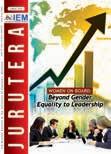

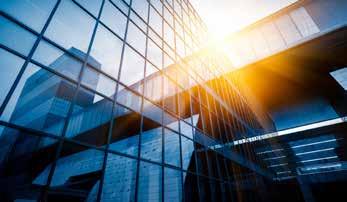





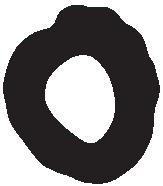








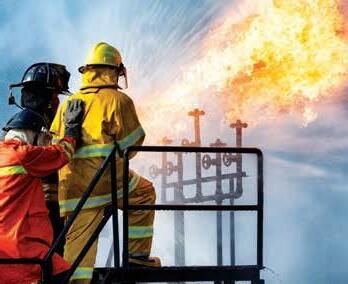
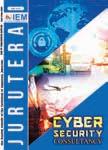









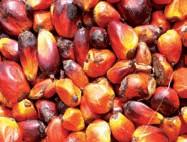

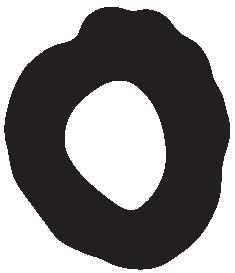




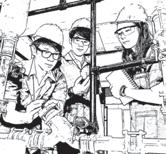





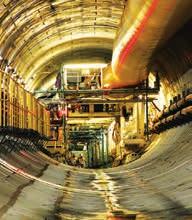




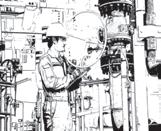












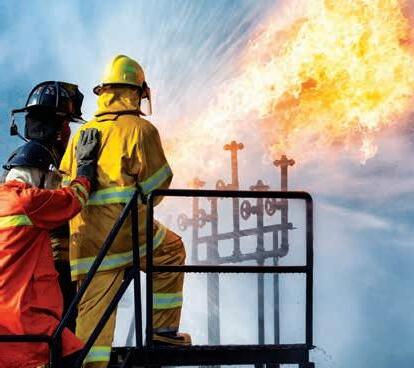


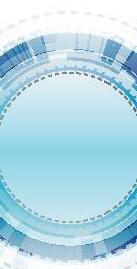

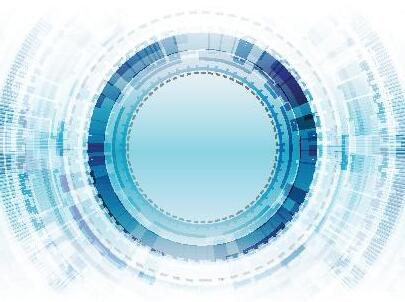







JURUTERA has an estimated readership of 200,000 professionals. Our esteemed readership consists of certified engineers, decision making corporate leaders, CEOs, government officials, project directors, entrepreneurs, project consultants, engineering consulting firms and companies involved with engineering products and services.


Our business partners can be assured that their products and services will be given the circulation and exposure they deserve, thus maintaining a sustained advertising presence to our core readers of decision-making engineers and technical experts. Our website offers an even wider market reach, with added international presence, aided by our international affiliation with official engineering bodies all over the world. Our online and offline advertising features such as banner advertising, article sponsorship and direct e-mail announcements have proven to be successful marketing strategies that will set the businesses of our partners apart from their competition.








Written and Prepared by:


CSchool
rack formation is a common durability-related phenomenon in many concrete structures. While larger cracks compromise structural integrity, smaller sub-millimeter cracks can cause durability issues due to increased matrix permeability caused by particularly connected cracks. Routine manual maintenance and repair of concrete structures can be expensive and, in some cases, unattainable.
Therefore, including an autonomous self-healing repair mechanism would be highly beneficial as it would reduce maintenance while also increasing material durability. The autonomous healing concrete by microbially induced calcite precipitation has sparked a lot of interest in sustainable concrete repair and maintenance solutions. The biologically inspired material for self-healing concrete has been introduced with Geobacillus stearothermophilus encapsulated in alginate (AE-GS). In this study, the vegetative cells of Geobacillus stearothermophilus were encapsulated in alginate-hydrogel before it was added to mortar. Scanning Electron Microscopy (SEM) was used to examine the encapsulated strain and its characteristics to confirm the presence of encapsulated bacteria. The performance of AE-GS in mortar mixture as a self-healing agent was measured by compressive strength and crackhealing efficiency. The healing efficiency of AE-GS was used to determine its suitability as a crack repair material. When comparing it to those with a lower replacement level of AE-GS and a lower concentration of bacteria, the results showed that incorporating 15 % AE-GS with1×1011 cfu/ml bacteria concentration resulted in maximum crack healing of 80%. Geobacillus stearothermophilus was found to be capable of inducing self-healing by utilising the available nutrients in its environment. The combination of Geobacillus stearothermophilus and alginate gel beads

provided an intriguing approach for crack remediation using the autogenous healing concept.
Geobacillus stearothermophilus is a thermophilic type bacterium capable of thriving in high temperatures (30°75°C) which can be found in the geothermally heated region such as hot springs [1], [2]. In a harsh environment, Geobacillus stearothermophilus produce endospores [3] and its morphology and resistance properties allow it to be mobilised in the atmosphere and transported over long distances [4]. Furthermore, the longevity of Geobacillus stearothermophilus allows it to lie dormant but viable in extreme conditions for long periods.
This study focused on 2 major issues:
• The development of autonomous healing concrete using Geobacillus stearothermophilus and
• The suitability of AE-GS as a new smart material to be investigated for use in concrete repair and maintenance.
The continuous ingress of water and chemicals in crack propagation would eventually cause premature matrix degradation and corrosion of embedded steel reinforcement if not properly treated [5]. In contrast, adding the bacteria-based healing agent during the mixing process would solve the problem. The bacteriabased healing agent would be activated by the crack and water entering the concrete, resulting in abundant mineral precipitation. This mineral precipitation aids in crack closure and prevents further entry of harmful materials, protecting the reinforcement from corrosion. This concept of self-healing is illustrated in Figure 1
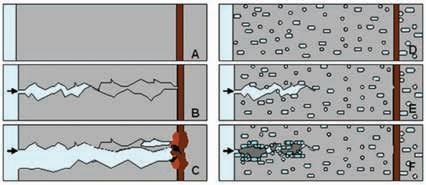
Figure 1: Schematic drawing of conventional concrete (A-C) vs bacteria-based self-healing concrete (D-F) (courtesy of Jonkers) [9]
The most common and well-known pathways to precipitate calcium carbonate (CaCO3 ) is by enzymatic hydrolysis of urea (CO(NH2 )2 from bacteria through the biomineralisation process [6]– [8]. Urea hydrolysis can produce high concentrations of carbonate and is the most easily controlled reaction to generate carbonate [9], [10]. The equation for this chemical reaction shown below:
The combination of calcium (Ca2+) from feeding solution or local environment with carbonate ions ( ) resulting in the formation of calcium carbonate (CaCO3 ) as in Equation 2 shown below:


The materials for producing Geobacillus stearothermophilus encapsulated in alginate (AE-GS) mortar mixes are described in the following subsections.
Bacterial Strain: Geobacillus stearothermophilus (ATCC 12978) with medium growth of sterile nutrient broth (NB) containing beef extract and peptone was used to culture living cells. The cells were harvested by centrifugation prior to the encapsulation process.
Encapsulation Process: The encapsulation processes were set up to keep the bacteria safe while it passed through as inert material. Sodium alginate was used as a gelling agent. The nutrient source for the bacteria required yeast extract, urea and calcium lactate with calcium chloride as a cross-linker.
Scanning Electron Microscopy (SEM): Two specimens were prepared for SEM testing. First, the Geobacillus stearothermophilus for its shape and morphology. Second, the condition of Geobacillus stearothermophilus after 28 days of being encapsulated and submerged in the cement slurry.
Determination of mortar mix proportion and casting process: The mortar mix design was based on a cement-to-sand ratio of 1:3 and a water-to-cement ratio of 0.5. The chemical used for encapsulation (AE) was calculated based on the weight of total replacement at 3%, 9%, and 15% by weight. Two bacterial concentrations (BC) were used, namely 1x103 cfu/ml and 1x1011 cfu/ml and 9 batches of total mix designations were produced. There were 3 batches of alginate-encapsulated without Geobacillus stearothermophilus, namely R (3%), R (9%) and R (15%) and 6 batches of Geobacillus stearothermophilus encapsulated in alginate (AE-GS 1 to AE-GS 6). The R and AE-GS batches were mixed in the proportions as shown in Table 1. Before the mixing phase, AE-GS was prepared. In a dry mix, cement and sand were combined and then AE-GS was added.



GIRDER
The BH Girder is an innovative and enhanced version of PSC Girder that utilizes the Bulb-T shape integrated with Half Slab which enables it to be applied over a span of longer than 60m. By adopting the latest cutting-edge technologies and innovati on, the BH Gir der has been designed to achieve the ultimate goals of “ Cost Effectiveness ”, “ Rapid Construction”, “Aesthetics” and “Safety”.



● Maximization of prestressing efficiency
● Minimization of prestressing friction loss E
ciency

● Reduction of substructure cost
● Reduction of slab cost by half slab girder

● Omission of deck slab form work and s hori ng work by half slab girder
● Shorter construction period
Constructability

● Design computations and analysis
● Construction drawings
● Material and c onstruction specifications
● Cost estimates
● Technical advice and c onstruction assistance
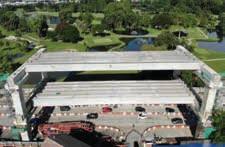
Petaling
Tel : 012 218 6693( Tan CC)


Tel : 603 6142 6638
Fax : 603 6142 6693
Email : tancc@nehemiah-grp.com
Email : enquiry@nehemiah-grp.com
A partnership of (Free of charge) BH Girders (60m long) launched on double decker portal piers at Setiawangsa Pantai Expressway


a Encapsulation composition for alginate encapsulated without Geobacillus Stearothermophilus (R) and Geobacillus stearothermophilus encapsulated in alginate (AE-GS) b Material constituents for batch R and AE-GS
The experimental work on Geobacillus stearothermophilus encapsulated in alginate (AE-GS) is detailed in the following sub-sections:
Compressive strength: The mortar specimens were tested for compressive strength following BS EN 123903:2009. The compressive strength of the specimens was tested at 7 and 28 days. The dimensions of the specimens are 50 mm x 50 mm x 50 mm. The compressive machine was set to a pacing rate of 3.0 kN/sec.
Quantification of healing efficiency: The realistic cracks were created with 40 mm cylinder with a diameter of 100 mm using a Universal Testing Machine (UTM) Type 1000. All specimens were subjected to a pacing rate of 15% and a compression load of 0.083 kN/s to build several realistic crack widths.
Visualisation of crack filling: A portable stereomicroscope (Dino-Lite camera) was used to examine the crack filling. Initial and final images were taken after incubation under wet-dry cycles for 7, 28 and 60 days. The image of crack widths was taken at two locations for each sample. The healing ratio by the width decrement is calculated using Equation 3 [11] below:

where Cwi is initial crack width, Cwf is final crack width and Cwt is a total initial crack width. The self-healing with the aid of bacteria is mainly due to microbial precipitation of calcium carbonate; the quantification crack healed by the bacterial deposition will be an indicator for healing efficiency [12]. The data obtained was analysed and the results were averaged.
Scanning Electron Microscopy (SEM): Based on observation via the SEM image in Figure 2, the Geobacillus stearothermophilus is a rod-shaped cell as defined by Zeigler [4] and Nazina et al. [13]. Geobacillus stearothermophilus can be encapsulated in alginate hydrogel while retaining all its incorporated nutrients (Figure. 3). This shows that an alginate hydrogel can both protect bacteria and facilitate in a concrete environment.
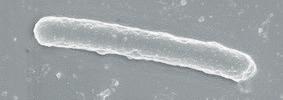
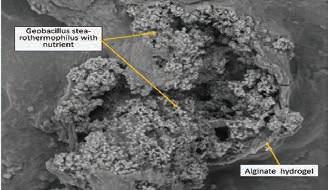
Compressive strength: The results (Figure 4) showed that when AE-GS was used at a higher percentage, such as 15%, the strength of the specimens was significantly reduced. In comparison to other batches, the lower percentage of AE-GS (3%) with a higher bacterial concentration (1x1011 cfu/ ml) had the highest compressive strength. A 15% replacement of AE-GS in the mortar resulted in a significant decrease in compressive strength as opposed to a 9% replacement of AE-GS in the mortar.
The results (Figure 4) also indicated that the strength decreased considerably with a higher incorporation of AE-GS, for instance at 15% replacement. The lower percentage of AE-GS (3%) with higher bacterial concentration (1x1011 cfu/ml) recorded the highest compressive strength. A major reduction of compressive strength was observed on a 15% replacement of AE-GS in the mortar as compared to 9% and 3% replacement of AE-GS. In comparison to the direct incorporation of bacteria, which had a positive impact on compressive strength, the strength of the concrete decreased after the addition of AE-GS. Raden Maizatul Aimi et al., [14] found that a higher concentration of Geobacillus stearothermophilus had a direct impact on early strength as early as 3 days when compared to a control mortar.
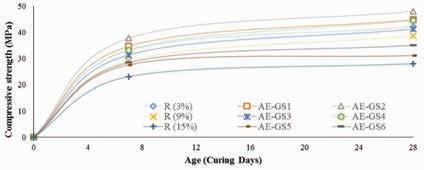
Quantification of crack healing: The reference was made by combining alginate-hydrogel with no bacteria (R). The incorporation of AEGS improved the autogenous healing of mortar specimens (Fig. 5). The progression of the crack healing process can be seen in stereomicroscopic images of cracks taken at regular intervals (0, 7 and 28 days). The cracks were observed to gradually heal over time (Figure 6). After 28 days, cracked mortar with a higher replacement of AE-GS and a higher concentration of bacteria had healed completely. On the reference mortar, no deposition of calcium carbonate due to bacterial precipitation was observed.





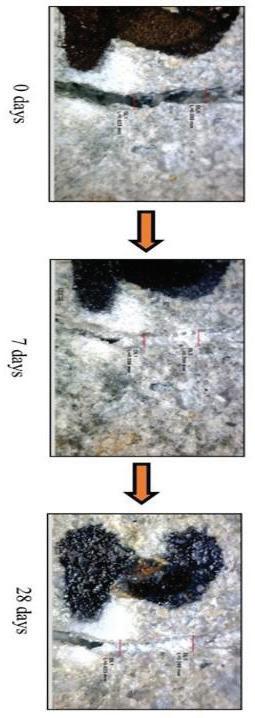
The results of the study show that crack healing with Geobacillus stearothermophilus encapsulated in alginate (AE-GS) is significantly more efficient than crack healing with the same composition concrete but without the addition of bacteria (AE-R). The addition of AE-GS to the mortar matrix has two impacts. Firstly, AE-GS has a negative effect on compressive strength by incorporation of more than 9% in mortar. Secondly, higher AEGS replacement (15%) and higher bacterial concentration (1x1011 cfu/ ml) in mortar resulted in higher healing efficiency. Higher bacterial concentrations indicate that more calcium carbonate precipitation will occur compared to a lower bacterial concentration (1x103 cfu/ ml). The incorporation of AE-GS in mortar mix shows the occurrence of self-healing based on stereomicroscope images. Maximum healing is achieved at 80% on the 28th day of observation. When 15% of the AE-GS is replaced as in AE-GS5 and AE-GS6, the strength drops between 17% and 24% compared to AE-GS replacement at 3% and 9%. The ability of alginatehydrogel to encapsulate Geobacillus stearothermophilus and act as a vehicle protector (as an inert material) is demonstrated in this study. The ability of bio-based healing materials to activate when exposed to water, makes them ideal for situations where manual inspection or repair of concrete parts of a structure is impossible. Biomineralisation of Geobacillus stearothermophilus also implies that the bacteria will be successful in future potential methods of repair and maintenance.
[1] Watanabe, Taisuke, et al. “Inactivation of Geobacillus stearothermophilus spores by high-pressure carbon dioxide treatment.” Applied and Environmental Microbiology 69.12 (2003): 7124-7129.
[2] McMullan, Geoffrey, et al. “Habitat, applications and genomics of the aerobic, thermophilic genus Geobacillus.” Biochemical Society Transactions 32.2 (2004): 214-217.
[3] Georget, Erika, et al. “In situ investigation of Geobacillus stearothermophilus spore germination and inactivation mechanisms under moderate high pressure.” Food microbiology 41 (2014): 8-18.
[4] D. R. Zeigler and D. R. Zeigler Correspondence, “The Geobacillus Paradox: Why is a Thermophilic Bacterial Genus So Prevalent on a Mesophilic Planet?” 2015, doi: 10.1099/ mic.0.071696-0.
[5] H. M. Jonkers, “Bacteria-based self-healing concrete,” Heron, vol. 56, no. 1–2, pp. 5–16, 2011.
[6] Otlewska, Anna, and Beata Gutarowska. “Environmental parameters conditioning microbially induced mineralization under the experimental model conditions.” Acta Biochimica Polonica 63.2 (2016): 343-351.
[7] Anbu, Periasamy, et al. “Formations of calcium carbonate minerals by bacteria and its multiple applications.” Springerplus 5.1 (2016): 1-26.
[8] De Muynck, Willem, Nele De Belie, and Willy Verstraete. “Microbial carbonate precipitation in construction materials: a review.” Ecological engineering 36.2 (2010): 118-136.
[9] “Microbial CaCO3 precipitation for the production of biocement - Murdoch University Research Repository.” https:// researchrepository.murdoch.edu.au/id/eprint/399/ (accessed May 01, 2021).
[10] Huang, Haoliang, et al. “Self-healing in cementitious materials: Materials, methods and service conditions.” Materials & Design 92 (2016): 499-511.
[11] Wang, J. Y., et al. “Application of hydrogel encapsulated carbonate precipitating bacteria for approaching a realistic selfhealing in concrete.” Construction and building materials 68 (2014): 110-119.
[12] Wang, J. Y., et al. “Self-healing concrete by use of microencapsulated bacterial spores.” Cement and concrete research 56 (2014): 139-152.
[13] T. N. Nazina et al., “Taxonomic study of aerobic thermophilic bacilli: Descriptions of Geobacillus subterraneus gen. nov., sp. nov. and Geobacillus uzenensis sp. nov. from petroleum reservoirs and transfer of Bacillus stearothermophilus, …” International Journal of Systematic and Evolutionary Microbiology, vol. 51, no. 2, pp. 433–446, 2001, doi: 10.1099/00207713-51-2-433.
[14] Mohd Azam, Raden Maizatul Aimi, et al. “Enhancement of thermophilic (Geobacillus stearothermophilus) cement–sand mortar properties.” Regional Conference on Science, Technology and Social Sciences (RCSTSS 2014). Springer, Singapore, 2016.
Two years had passed since we last gathered for the 60th IEM Annual Dinner & Awards Nite on 20th April 2019. It was a pleasant surprise for everyone concerned when we managed to put together a smaller but no less exciting event for the 62nd IEM Annual Dinner & Awards Nite on 26th December 2021 at One World Hotel in Petaling Jaya.
Of course we abided by the SOPs issued by the Ministry of Health and only 6 persons were allowed seated at each table. We also took other precautionary measures and preparations to ensure that all those who turned up for the event were well protected. These included presenting each diner with a safety kit containing antibacterial wet wipes, hand sanitisers and even an envelope for them to keep their masks during dinner.
Despite the tight measures and other constraints, IEM was extremely pleased to note that all had a good time interacting with one another and that they enjoyed meeting each other face to face again. A total of 543 members and guests attended the dinner.
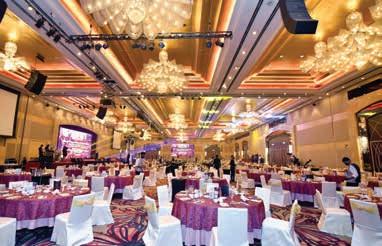
The evening, themed Helping Engineers Achieve Resilience Together (HEART), started with the arrival of the guest of honour, YBhg. Datuk Ir. Hj Mohamad Zulkefly bin Sulaiman, the Director General of Jabatan Kerja Raya Malaysia. IEM greatly appreciated his taking time off from his busy schedule to attend the event.
In compliance with SOP requirements, dinner was served individually. As the guests enjoyed the first three courses, they were entertained by Kryptonite, a 4-piece live band who performed songs from the 1960s to current pop favourites.
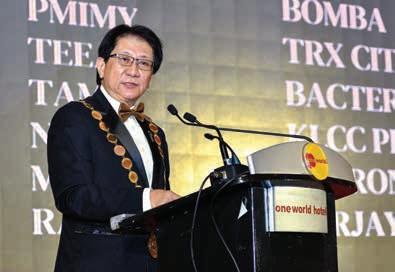
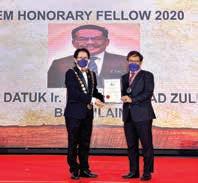
In his welcome speech, IEM President Ir. Ong Ching Loon thanked all members and guests for their support and the Annual Dinner Organising Committee for its efforts in making the event a success. He said the 62nd Annual Dinner was particularly meaningful to IEM as even the IEM Committees, Council and Branches had not really met physically since the start of the Covid-19 pandemic. Nevertheless, IEM had seized the opportunities from the challenges and created many unprecedented “firsts” in the 62 years of its history, by having virtual Council and Excomm meetings, virtual Annual General Meeting, webinars, virtual technical visits as well as electronic balloting and e-Bulletin. IEM’s very own mobile application, IEMGo, was also launched in April 2021.
In his speech, Datuk Ir. Hj Mohamad Zulkefly said he was very involved in IEM during his younger days as he had served as Treasurer of IEM Eastern Branch. He hoped IEM members and all engineers would come together and join forces to help the country bounce back from the impact of the global pandemic. For his contributions to the nation and to IEM, Datuk Ir. Hj Mohamad Zulkefly was conferred the IEM Honorary Fellow for 2021. IEM Past President Ir. Dr Tan Yean Chin was also conferred the IEM Honorary Fellow for his untiring services to IEM.
Awards were presented to notable individuals and organisations in recognition of their contributions to the profession and the nation. The five winners of the Contribution to Engineering Industry Award 2021 were:
Water Industry
Power Energy & Green Technology Industry
Engineering Consultancy Practices (ECP)
Construction and Property Developments
Bacteria Free Water Engineering (M) Sdn. Bhd.
KUB-Berjaya Enviro Sdn. Bhd.
Afrima Consulting Engineer Sdn. Bhd.
KLCC Projeks Sdn. Bhd.
Digital Industry Centre of Excellence (COE) Petronas Carigali Sdn. Bhd.
The winner of the IEM Outstanding Engineering Achievement Award for 2021 was TRX City Sdn Bhd for its Design & Construction of the Sewerage Treatment Plant (STP) – The First Private Wastewater and Recycling Plant for the International Financial District, Tun Razak Exchange.
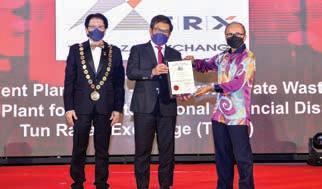
As part of its appreciation to members and organisations which had supported IEM in its membership drive activities in 2020, IEM presented the Top Membership Drive Awards to the following:
Graduate Membership (Individual category) Ir. Kwong Kok Tze
Graduate Membership (Organisation category) Petroliam Nasional Berhad (PETRONAS)
Corporate Membership (Individual category) Ir. Gopal Narian Kutty
Corporate Membership (Organisation category) Jabatan Kerja Raya Malaysia
The IEM Annual Dinner & Awards Night would not be the same if the hardworking Technical Divisions were not given due recognition for their efforts in organising activities for the benefit of members in their professional development. The following top Technical Divisions were congratulated for their relentless efforts.
Champion Building Services Technical Division
First Runner-Up Civil and Structural Engineering Technical Division
Second Runner-Up Electrical Engineering Technical Division
Third Runner-Up Geotechnical Engineering Technical Division
Fourth Runner-Up Mechanical Engineering Technical Division
Most Improved Technical Division Environmental Engineering Technical Division
Because of the global pandemic and the imposition of the MCO from 18 March 2020, IEM have had to move all events and activities to virtual platforms. As the President mentioned in his speech, IEM had done very well in this area and in special recognition and appreciation for outstanding performance, contributions and efforts by the Technical Divisions, Special Interest Groups and Sections, the Best Virtual Activities Awards was introduced.
The awards were presented for virtual activities organised in 2020. There were 2 categories:
1. The Highest Number of Virtual Activities Conducted and
2. The Highest Paid Numbers of Participants for Virtual Activities Conducted.
For the Highest Number of Virtual Activities Conducted, the winners were:
Champion Electrical Engineering Technical Division
First Runner-Up Project Management Technical Division
Second Runner-Up Civil & Structural Engineering Technical Division
For the Highest Paid Numbers of Participants for the Virtual Activities Conducted, the winners were:
Champion Electrical Engineering Technical Division
First Runner-Up Tunnelling & Underground Space Technical Division
Second Runner-Up Project Management Technical Division
As usual, there was a lucky draw with prizes that included smart watches, mobile phones, buffet dinner vouchers, hotel stay voucher and smart tablets. This exciting segment closed the evening with a cannon confetti and good night to the guests.
IEM wishes to thank all parties, sponsors, guests, Committee members and the Secretariat for the successful event and looks forward to the 63rd Annual Dinner & Awards Nite in 2022.
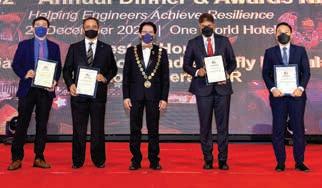
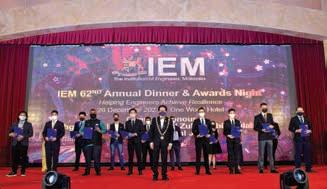
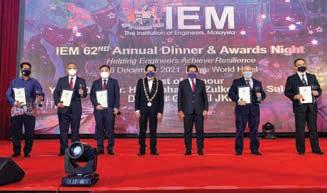
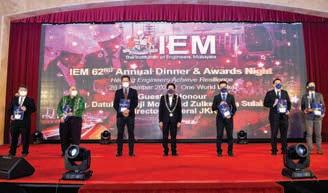
Written and Prepared by:


The impact of the COVID-19 pandemic is unprecedented in history. In Malaysia, the global crisis shook the engineering and construction industry almost to its core, necessitating the urgent need for the industry to reform and improve its resilience to thrive in a volatile, uncertain, complex and ambiguous future.
Resilience is not only about risk mitigation to enable a swift elastic return back to a prior state, but also about the adaptive capacity to navigate the uncertainty — i.e., the ability to adapt to a world that is permanently under transformation, where both social and physical elements are mobilised. In our context, resilience can be defined as the adaptive capacity of the local engineering and construction industry to survive and thrive in the changing environment.
The pandemic expedited local transition towards the 4th Industrial Revolution (4IR) since the implementation of Movement Control Order (MCO) which severely limited our movement and physical interaction. As such, the internet and online communication became the default modes of interaction and medium for sharing and disseminating information. For efficient day-today productivity and delivery, high specification hardware, internet speed, data storage capacity and network licence for engineering software are now essential norms and crucial requirements for engineering professional service works. It is expected that in the future, information-based construction management methods (such as building information modelling (BIM), augmented reality (AR), virtual reality (VR), robotics 3-D printing, artificial intelligence (AI) and drones will be the daily tools to enable the full integration of people, process and machines in any project lifecycle.

Building Information Modelling (BIM) is a method of managing building design and project data in digital format throughout the lifecycle of a building. BIM is becoming one of the important technologies to enable efficient and effective lifecycle management of the built environment as it reduces risk, improves productivity and extends the sustainability of a construction project.
In the context of modern construction projects which are more complicated to manage, the adoption of BIM has now turned into a major agenda to help resolve communication issues between stakeholders. Appreciating the potential benefits of reduced transaction costs and operational errors, the Public Works Department (PWD), a leading technical agency for the Malaysian Government and in the country, has included the use of BIM for projects above RM10 million as outlined in its Strategic Plan 20212025. Specifically, PWD targetted 50% of its projects to adopt BIM in 2021, with a yearly increment of 10%.
The use of BIM in the building industry is beneficial in terms of creating a shared understanding between stakeholders working in different locations, which potentially leads to 3-D model optimisation such as in 3-D prints, animations and virtual reality.
Augmented reality is another piece of technology that enables remote collaboration and knowledge transfer. It can be described as both an information aggregator and a data publishing platform that allows the users to: 1) passively view displayed information, 2) actively engage and interact with published contents and 3) collaborate with others in real-time from remote locations. By offering additional access to information and further opportunities for enhanced collaboration, AR supports decision making on-site, thus promoting resilience in the workforce.
One main challenge during the pandemic was the exacerbated shortages in skilled craft and the need for social distancing even at construction sites. The local construction industry must, therefore, be agile and possess the capacity to respond effectively to these changing external conditions. The advancement of technology in the form of construction robotics and automation, offers the solution for a sanitised and remote job site. Nevertheless, multiple technological challenges, such as those related to the human-technology interface, still need to be addressed to make these innovations fully practical and be able to operate smoothly.
In addition to investing in emerging technologies, what else does an organisation need to rebound and change, post-pandemic? Some strongly believe it is people as they matter the most; after all, it is the people who will drive the adoption of advanced technology and thus ensure successful business transformation. As such, staff recruitment and training must be given careful attention.
In engineering services, the design stage is the process that requires professional ingenuity to fulfill specific design intentions. This stage needs to be managed properly. One key issue in design stage management is the business disruption in maintaining or stabilising the workforce. Some of the strategies to overcome this disruption are creating multiple points of contact, cross-training employees on identical tasks, developing succession and transition plans and creating a collaborative culture within the firm. Ideally, these strategies will become essential preconditions to deliver knowledge and skills training for employees, i.e., this should be done as a part of a preparedness programme when a business is running in normal conditions, in order to reduce the risk of business disruption and thus help protect profits.
An engineering consulting firm, for instance, might not be able to disperse professional services when there was no competent employee in information communication technology (ICT) readily available during the first MCO from 18 March to 3 May 2020. This was because, during the first MCO, there was a surge in the use of online video conference platforms such as Google Meet, Zoom, and Webex. These have become the new norm for business meetings today. In addition, cloud licensing for engineering software had also become commonly used which hinders software counterfeiting. It was clear then that to survive, the engineering professional services firm had to be agile and resilient.
As engineers, we should use our skills to support economic recovery and the switch to green technology. To successfully transition from traditional economy to IR4.0 requires new skills in engineering, similar to if we are moving from a labour-intensive factory to an automated factory where the traditional machinist workforce must
be retrained to be automation engineers. In short, IR4.0 requires a skilled workforce in data science, machine learning, computer simulations, system engineering and robotics, many of which are areas with severe skill shortages.
It should also be noted that, in line with the national digital goals for IR4.0, the Government had planned to strengthen the national digital capabilities, as well as to equip the workforce with the right skills to support the enhanced national digital structure (such as improved internet connectivity and expanded 5G technology).
Industrialising building systems, which is termed Industrialised Building System (IBS) in Malaysia, can help simplify the process of design and construction without having to recreate a unique process for each project. IBS includes offsite prefabrication and modularisation to reduce waste and carbon emissions as well as parallel coordination between onsite and offsite works to enhance quality control.
IBS had been on the national agenda for project development construction since early 2003 with the introduction of the IBS road map. It was later incorporated into the 2016-2020 Construction Industry Transformation Programme (CITP), a five-year programme to enable sector-wide transformation to ensure the industry remains productive, resilient and sustainable.
As documented in the CITP report card to the Ministry of Works on 4 March 2021, the five-year programme resulted in significant positive changes in productivity of the industry across the CITP’s four strategic thrusts: Quality, Safety and Professionalism, Environmental Sustainability, Productivity and Internationalisation & Competitiveness.
To boost the productivity rate in the construction industry, several measures were introduced in the CITP to facilitate its transition from a labour-intensive sector to one based on technology. A key initiative was to promote and regulate the use of IBS, which allowed for shorter project completion timelines and enhanced quality of work. In light of this governmental initiative, PWD initiated the implementation of IBS in its project developments as early as 2000. The effort began with the design office taking the initiative to use pre-cast reinforced concrete frames or loadbearing walls. The programme was continued in bits and pieces until the Ministry of Finance (MoF) issued a formal instruction to enforce IBS in Federal Government projects costing more than RM10 million (PK 1.4) from 15 January 2020. It was also mandated that IBS should be implemented in no less than 70% of all suitable government projects.
It should also be noted that the private sector seemed reluctant during the early stages of IBS implementation. Nevertheless, with the government’s persistent initiative and generous incentive for IBS implementation, the private sector started to embrace the programme as clearly indicated in Chart 1.0, which plots the significant uptake of




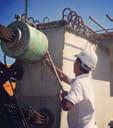
IBS in private sectors from 2014 to 2020. Chart 2.0 shows the corresponding value of construction work done in ringgit from Q1 2019 to Q3 2021. With 41% of IBS implementation in the private sector in 2020, the overall value of IBS was quite encouraging, estimated at around RM4.2 billion.




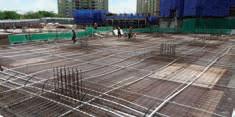

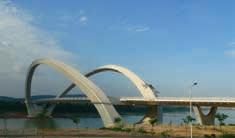

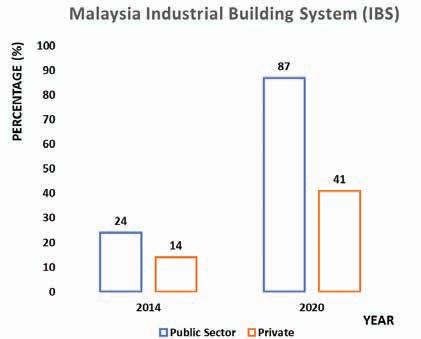
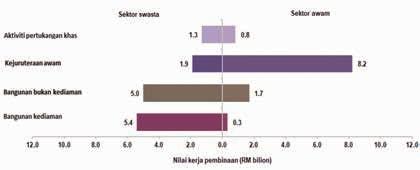
The emergence of fast-spreading variants of the COVID-19 virus continues to affect global health and economy. However, there is light at the end of the tunnel, with encouraging signs of a local economic recovery driven by the accelerated vaccination programme and high fiscal support by the Government. Since the onset of the pandemic, the Government has launched many economic stimulus and relief packages as recorded in the National Budget 2022 tabling on 29 October 2021. The Government has pledged to remain agile and flexible in providing the necessary fiscal support to the people
and businesses to help us bounce back and ensure a sustainable recovery.
After a moderate rebound in 2021, Malaysia’s economic momentum is expected to pick up even faster in 2022 with the broader re-opening of the economy as well the projected mass national vaccination programme. Headline inflation is expected to decrease slightly in 2022. The unemployment rate will improve in tandem with the pick-up in economic activities and higher demands for labour.
Table 1.0 tabulates Malaysia’s growth by sector, while Table 2.0 lists the inflation and unemployment rates, for 2021 and 2022.
to 2020. The statistics from MoE showed the number of university graduates in engineering, manufacturing and construction which was assumed to include architectural, quantity surveyor and town planning graduates. The result indicated a significant gap between the number of BEM registrations and the number of university graduates in 2019 and 2020. The number of graduates in 2020 far surpassed the number of BEM registrations in 2021 by 37% (equivalent of 95,000 graduates). Even when the number is subtracted by 10,000 to account for possible registrations with the board of architect, quantity surveyor and town planning, the gap of BEM registrations is still significant.
Assuming the acts which mandate all engineering graduates to register with BEM before employment and practice as engineering professionals per the Engineers Act 1967 is strictly enforced, the mystery remains: Where are all these graduates? Are they employed in the industry without the BEM registration (and hence not in compliance with the law) or have they changed their profession due to fewer job opportunities in the market?
*
= estimates f = forecast Source: Ministry of Finance Malaysia
* e = estimates f = forecast
Source: Ministry of Finance Malaysia
Engineers shape the future. As such, during this challenging period of rebuilding, the industry must be creative and swiftly apply advances in technologies to meet the changing industry demands. The industry needs also to be flexible with the workforce while not abandoning the social drive for diversity and inclusion. As the workforce transitions from traditional to a more advanced skillset, the industry should look to leverage on transferable knowledge and experience, while investing in training personnel with skills necessary to rebound from the current pandemic.
Chart 3.0 is the summary of a simple study conducted recently to investigate the career trajectories of engineering degree holders, post-graduation. The samples were Malaysian graduates who had registered with the Board of Engineers (BEM), based on the online BEM database in December 2021 and university graduates from statistics published by the Ministry of Education (MoE) from 2015
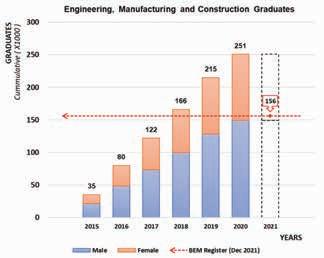
It is therefore suggested that a dynamic tracking mechanism of engineering graduates be established, published and regulated by the BEM to keep track of engineering graduates in future as well as prospective engineering employers. This is in line with the stipulated role of the BEM, which is to regulate the conduct and ethics of the engineering profession and the National 4IR Policy. This effort will assist employers and the government to match and employ or to re-train graduates to cope with the changing needs of engineering industries. Investment to re-train or re-employ the engineering graduates helps current employers to absorb the impact of the pandemic, thus preventing the loss of these graduates to nonengineering fields and ensuring the existence of the current engineering employer as well.

The engineering professional must be agile and resilient in adapting and adopting the external changes in this fast-paced but uncertain environment. The readiness and willingness to embrace innovations towards realising IR4.0, such as those related to integrated work processes, information-based decision-making systems and online delivery platforms, will help engineers to survive and thrive. For a business organisation, medium and long-term strategic plans, as well as core investments in advanced technologies and skilled workforce, are necessary to take advantage of the structural support and opportunities laid out by the government.
[1] Hala Nassereddine, Kyung Wook Seo, Zofia K. Rybkowski, Christian Schranz and Harald Urban (2021). Propositions for a Resilient, Post-COVID-19 Future for the AEC Industry: Original Research for Journal Frontiers in Built Environment
[2] Media Statement of CIDB Malaysia (March 2021): Construction Productivity Increased By 60% Under The CITP
[3] Pekeliling Perbendaharan Malaysia P.K.1.4: Pelaksanaan Sistem Binaan Berindustri (IBS) Dalam Projek Kerajaan (Kuat Kuasa Pada 15 Januari 2020)
[4] Kertas Perintah CMD.35 Tahun 2021 MALAYSIA: Tinjauan Fiskal Dan Anggaran Hasil Kerajaan Persekutuan 2022. Kementerian Kewangan Malaysia
[5] Quarterly Construction Statistics, Third Quarter 2021, Department of Statistic Malaysia
[6] Statistik Pendidikan Tinggi 2020, Kementerian Pengajian Tinggi Malaysia
[7] Statistik Pendidikan Tinggi 2019, Kementerian Pengajian Tinggi Malaysia
[8] Statistik Pendidikan Tinggi 2018, Kementerian Pengajian Tinggi Malaysia
[9] Statistik Pendidikan Tinggi 2017, Kementerian Pengajian Tinggi Malaysia
[10] Statistik Pendidikan Tinggi 2016, Kementerian Pengajian Tinggi Malaysia
[11] http://bem.org.my/web/guest/graduate-engineer1
[12] https://www.bqsm.gov.my/list-of-registered-members/provisional-qs
[13] Annual Report 2019, Lembaga Arkitek Malaysia
[14] http://www.lpbm.gov.my/wp-content/uploads/2021/07/PERANCANG-BANDAR-SISWAZAHBERDAFTAR-2021.pdf
Webinar Talk on Unlock Your Assets Hidden Value with IoT in Food Production
Date : 10 March 2022 (Thursday)
Time : 3.00 p.m. – 5.00 p.m.
Venue : Digital Platform
Approved CPD : TBA
Speakers : Ms. Jeslyn Wong & Mr. Axel Eidmann
WEBINAR - Half-Day Course on “Are you ready for DOSH-SIRIM Certified PPE?”
Date : 15 March 2022 (Tuesday)
Time : 9.00 a.m. – 1.00 p.m.
Venue : Digital Platform
Approved CPD : TBA
Speaker : Ms. Sherlyn Voon Chel Ling
Pearl Ring Roundabout, Pudong Pedestrian Roundabout, Lujiazui Roundabout and Mingzhu Roundabout are names that refer to the same iconic infrastructure in Shanghai, China. This is the biggest roundabout in the heart of the financial district in Shanghai Metropolitan with a large elevated circular pedestrian overpass built over it.
The overpass is 5.5m from the street and is wide enough to allow 15 pedestrians to walk abreast. The overpass is accessible via a few elevators. Besides enabling pedestrians to cross the busy streets in safety, the overpass also offers them a clean, leisurely environment with a 360o view of the traffic intersections that converge at the roundabout below.
The roundabout is constructed as a five-leg type and the design is based on the latest turbo concept pioneered
Written and Prepared by:

by Dutch researcher Dr Lambert Fortuijin. It is basically a multi-lane roundabout with lane dividers to guide drivers to stay in the lane leading to the desired destination. The lane divider is also known as canalisation design and has the potential to cut down lane-change behaviour and hence the ability to minimise traffic accidents as stated in the research paper by Liu Qiujia of the Shanghai Jiao Tong University.
The Pearl Ring Roundabout is part of initiatives by the Chinese Government to construct eco-friendly structures. Since its opening in 2011, it has become a popular tourist spot, attracting both domestic and foreign visitors who come to admire the unique environment as well as to snap pictures.
I visited the Pearl Ring Roundabout a few years ago and managed to snap an aerial view photo from a nearby tower.
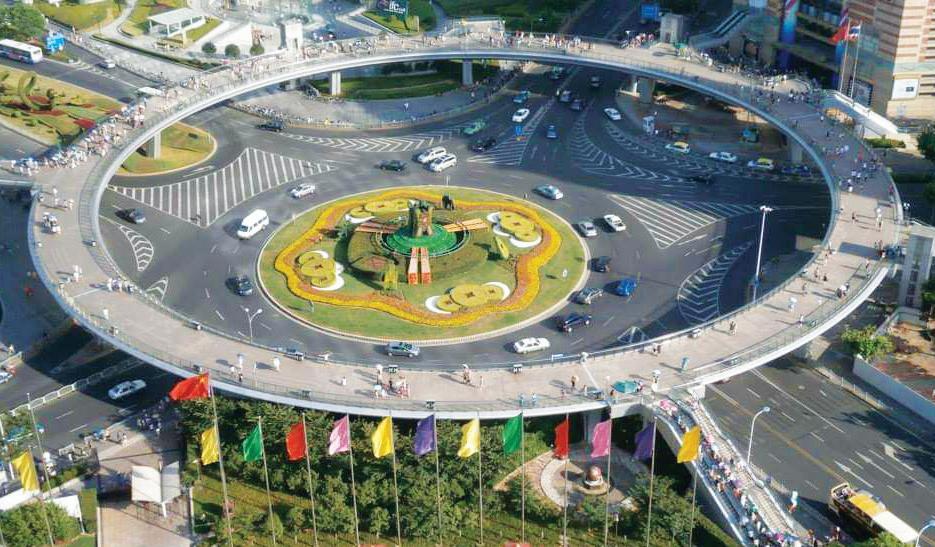





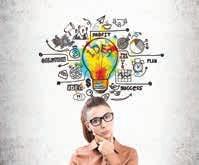





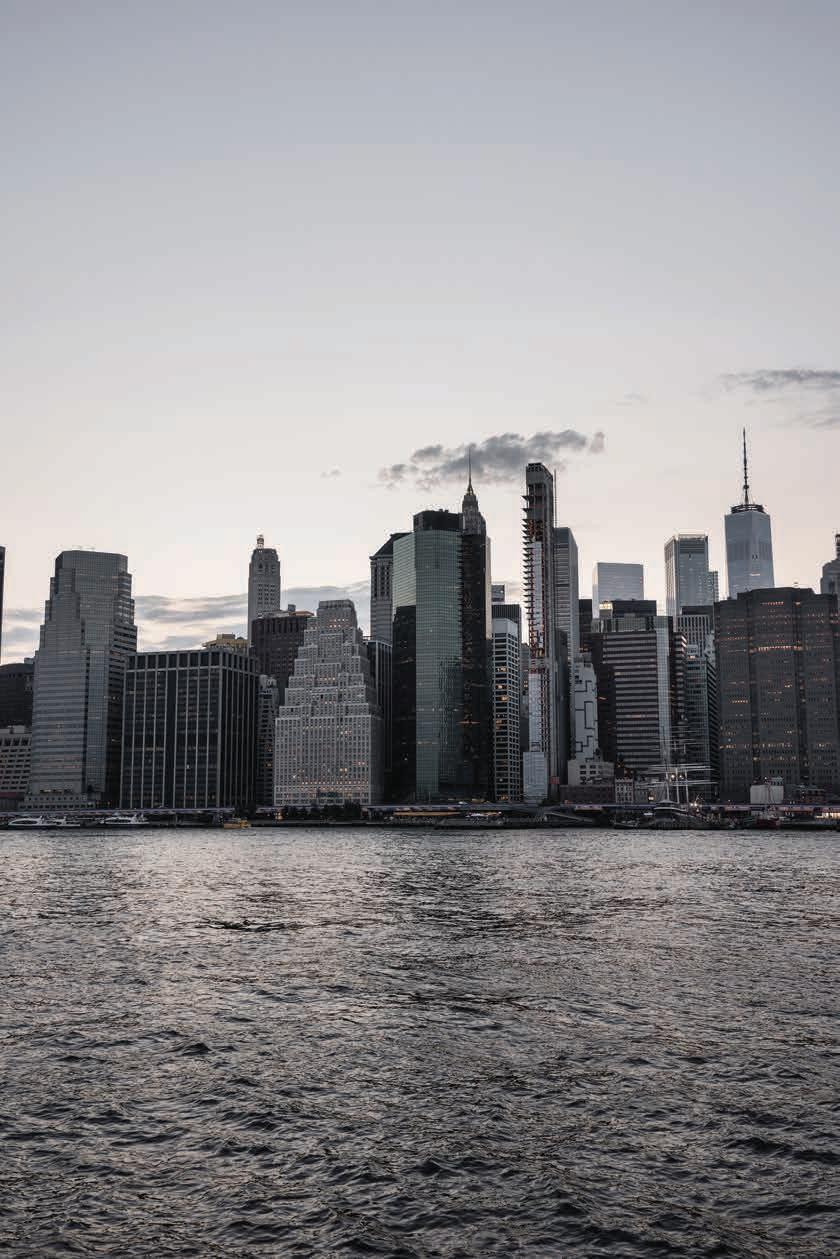
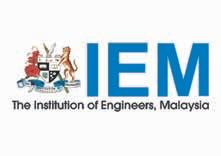
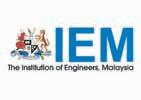











Written and Prepared by:

The Women Engineers Section of the Institution of Engineers, Malaysia (IEM), in collaboration with the Institute of Electrical & Electronics Engineers (IEEE) and the Green Cities of Construction Research Group (GCCRG) of Universiti Teknologi Malaysia Kuala Lumpur, organised a corporate social responsibility (CSR) programme at Projek Perumahan Rakyat (PPR) Seri Semarak, Kuala Lumpur, last year.
The half-day programme on Smart Urban Farming IoTCementbiosis Solar Hydroponic for Pressing B40 Urban Poor Need amid COVID-19, involved 30 B40 communities of PPR Seri Semarak and a group of 14 volunteers from the Department of Social Welfare (JKM) and was aimed at empowering the B40 urban poor to become more independent and resilient in income elevation while facing an uncertain future through smart urban farming.
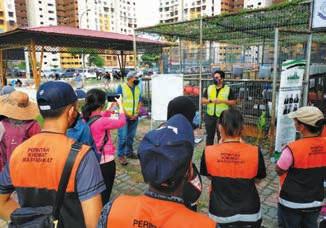
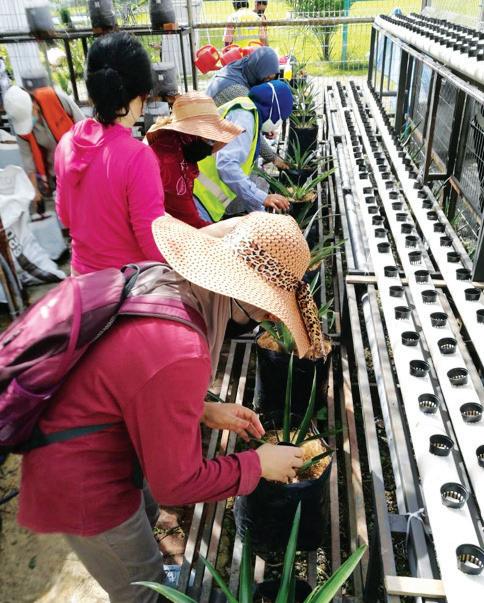
The programme, funded by the IEEE, leveraged on the technovation of the Internet of Things (IoT) and maintenance-free, solar-powered Nutrient Film Technique (NFT) hydroponic project constructed in the Agro Yard Seri Semarak, using low-maintenance-high-constructability cement-based materials.
It is expected to empower 20,000 B40 communities living in 1,580 units of low-cost apartments in 5 blocks of PPR Seri Semarak, through self-consumption and the sale of the hydroponic plants. At the same time, IEEE hopes that PPR Seri Semarak can be established as the Smart Community Urban Farming Training Centre for IoT, smart agro application, smart solar system and NFT hydroponic for another 23 PPR in Malaysia.
The role of the Women Engineers Section was to provide the subject matter expertise of IoT and smart application for real-time monitoring of the hydroponic plants connected to the internet via the existing PPR Seri Semarak Community Internet Centre. During the 2-hour session, the women engineers, led by Ir. Noorfaizah Hamzah, the Chair, and facilitated by Ir. Mah Siew Kien, Ir. Noraidah Yahya, Ir. Hanizah Argadan and Assoc. Prof. Ir. Dr Syuhaida Ismail, answered the many questions and responses from the community on the best practices of the IoT and real time monitoring system for the hydroponic plants. This event is the first
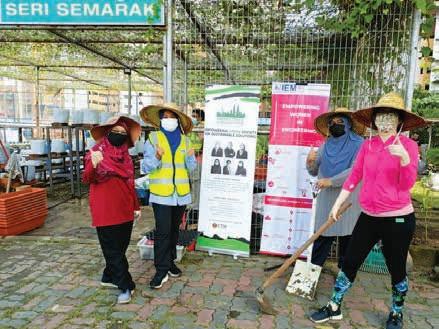
programme involving the Women Engineers Section which will continue to contribute in endeavours on other technical aspects of the project through training, talks and consultation in the near future until its completion in December 2022.


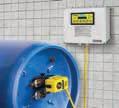
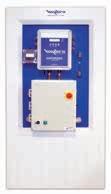
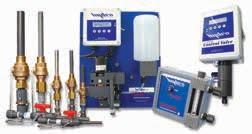



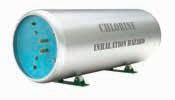

Written and Prepared by:


The Women Engineers (WE) Section organised a community service responsibility (CSR) collaboration project at Kampung LayangLayang Kanan, Parit, Perak, on 15 January 2022. The village is located along Sungai Perak and is popular for its fish (ikan tilapia and patin) farming activities.
The half-day event was initiated by Universiti Teknologi PETRONAS (UTP) and supported by Universiti Teknologi MARA (UiTM) Shah Alam, Nilai University (NU), Negeri Sembilan and Universiti Teknologi Malaysia (UTM) Kuala Lumpur. Taking part were 49 volunteers (7 WE members, 10 academics and 32 students) and 150 participants. The event was officiated by YBhg. Parlimen Parit, Dato’ Mohd Nizar Hj. Zakaria.
The collaboration project showcased several activities targeted at the various age groups, from adults to primary/secondary schoolchildren and kindergarten/ pre-school children. These included bokashi composting, Jom Kenali Jurutera, Moh Bancuh Konkrit!, Sukaneka, Moh Main@Toy Library Box, Guna Air, Mentol Menyala, Sembang Keusahawanan and a gulai patin tempoyak cooking competition.
Jom Kenali Jurutera was designed for secondary school students. In this motivational talk, WE members described scopes and careers in the various engineering disciplines. At the end of the session, students took part in a pop quiz activity.
WE also organised Moh Bancuh Konkrit! which introduced the main construction concrete material to primary school students. The young students made an imprint of their hands on the fresh, hand-mix concrete which was later presented to them as a memento. It was hoped that this hands-on activity would spark the interest of the children in engineering field.

UTP organised the bokashi composting project and presented 30 bokashi bins to selected villagers. In this project, villagers learnt more about bokashi composting techniques which would help them make a sustainable living through green technology. Bokashi composting is an anaerobic process where food waste is fermented in an airtight container that isolates the waste from oxygen as much as possible. The liquid produced is a very nutritious “bokashi tea” that can be used as fertiliser.
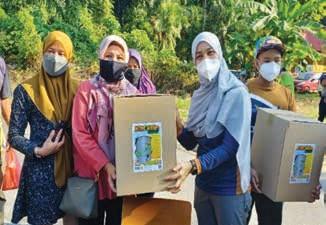
Volunteers from UTM and NU joined hands to conduct STEM activities such as Moh Main@Toy Box and other games for 30 preschool and kindergarten children. The first activity was a toy library session where the children were given STEM toys to play with. The next activity was colouring on sheets with images of the various careers that STEM offers. In the paper plane STEM challenge, the children were taught to make a paper airplane and then

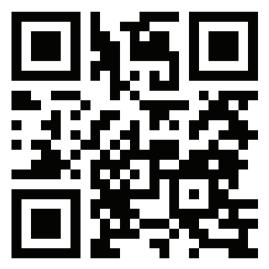

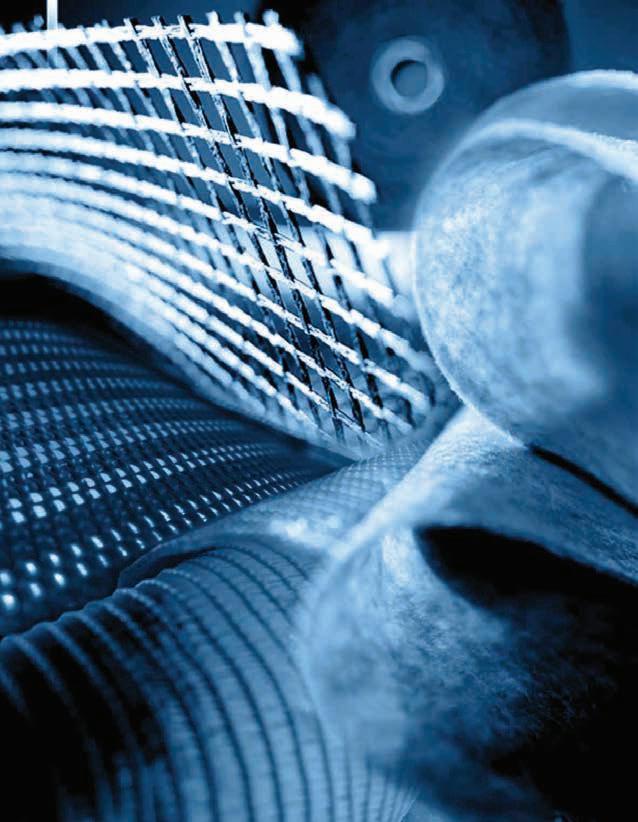
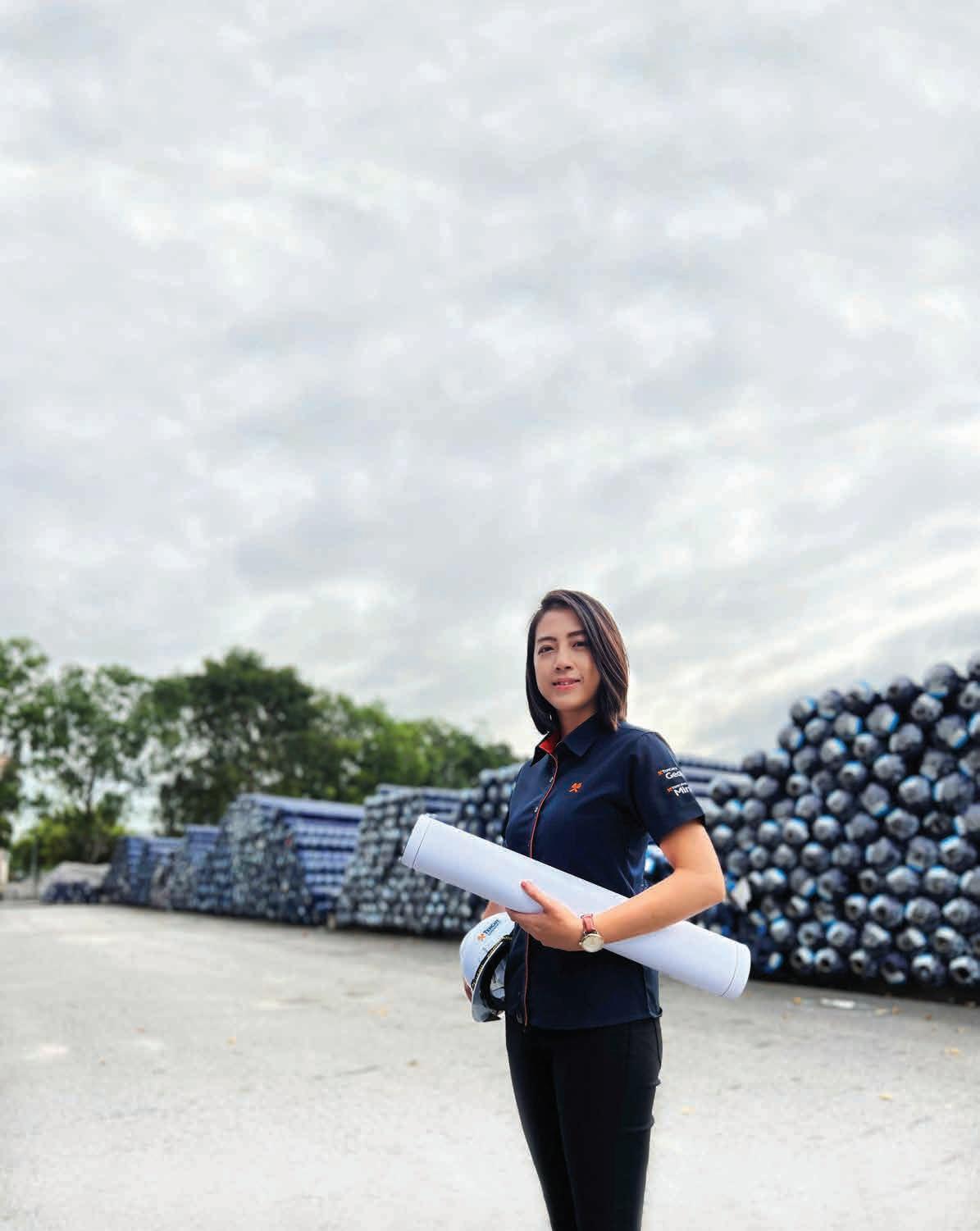
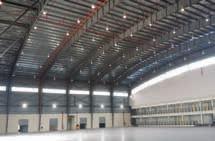
given a basic introduction to forces and motion. The children then proceeded to make, improve and fly their paper airplanes. Judging was based on creativity, distance flown and length of plane. The UiTM volunteers continued the fun in Sukaneka with games such as ping-pong cup, giant walk and a crawling game.
UTM showcased a technology-based activity to 28 primary school students in Guna Air, Mentol Menyala which used a Pico hydro turbine to generate electricity. Students were also introduced to new knowledge on renewable energy through experimental activities led by Assoc. Prof Ir. Dr Shamsul Sarip.
UTM conducted two sharing sessions for 23 adults, namely Starting F&B Restaurant Business (Dr Ruzana Ishak) and Sembang Keusahawan (Dr Noorlizawati Abd Rahim). All participants gave positive feedback in this knowledge-added session which showcased creative thinking approaches, improving existing business products and identifying new business opportunities.



Finally, 20 villagers took part in a cooking competition with the theme, gulai patin tempoyak. Ir. Rusnida Talib of WE was among the judges for this competition.
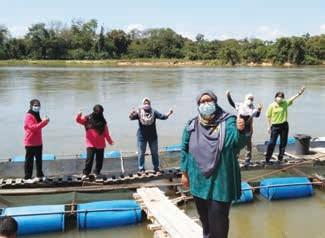
After the closing and prize-giving ceremony, WE members and other volunteers were treated to a barbecue of charcoal-grilled fish at the riverside. Indeed, this CSR collaboration project was one of its kind and WE looks forward to more activities with the villagers in the future.
Tel
Website : www.hitecmetal.com.my
E-mail : enquiry@hitecmetal.com.my
Written and Prepared by:

NYAN SHU QI (MEng Chemical Engineering Year 4 Student)
In conjunction with the IEM Health & Wellness Series organised by IEM YES HQ, IEM-HWUM Student Section is honoured to be part of the series as one of the organisers. In collaboration with Heriot-Watt University Student Association (HWUMSA) and Heriot-Watt University Counselling & Disability Support, it participated in the Global Wellbeing Week Conferences conducted by the Wellbeing Department of Heriot-Watt University Student Associations in 3 campuses (Edinburgh, Dubai and Malaysia).
The Malaysian Edition Global Wellbeing Week Conference, Taking Relationships to a New, Healthy Norm, was also in line with the IEM Health & Wellness Series organised by IEM YES HQ themed Rejuvenate, Revitalise & Live Well! IEM-HWUM Student Section organised the conference with the help of HWUMSA and IEM YES HQ.
The event took place on 12 October 2021 with 185 participants across the globe. Dr Ingo Tophoven, whose research interest is geared towards all issues pertaining to global mental health, was invited as the honourable speaker. He also holds an MA degree in counselling psychology and a PhD in counsellor education and supervision.
This conference was aimed at reflecting on the management of our relationships and the ways we could improve our relationships by focusing on ourselves, families, peers and especially, on our significant other. Creating a healthy relationship is crucial to our mental health. It is important to identify relationship parameters and assumptions, the reasons behind relationship failures and ways to succeed in relationships to ensure a positive impact on our mental health.
Dr Tophoven delivered a clear message to all participants on how, what and why it is important to practise self-love in order to create healthy relationships. Staying connected with ourselves will help improve our own emotional wellbeing, allowing us to be more present for ourselves and our loved ones.
We also learnt that conflicts are common in all relationships; in fact, it is inevitable. Having disagreements, misunderstandings and different expectations can be the cause of a failed relationship or a stronger relationship. Most people tend to focus on the arguments/fights with their loved ones, which results in losing them in return. From here, it is clear that having conflicts is not the problem but rather, the question is how we handle the conflicts. Practising healthy communication skills is crucial to resolving conflicts with our loved ones. Healthy communication skills include being open-minded and trying our best to understand the other person’s feelings first before proceeding to find a solution or compromise.
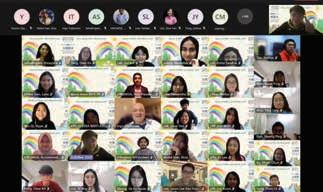
Event picture
Keywords of the article:
1. IEM Health and Wellness Series
2. Rejuvenate, Revitalize and Live Well!
3. Global Wellbeing Week Conference
4. IEM Healthy and Wellness Series EP 1: Taking Relationship to a New, Healthy Norm.
5. Dr Tophoven
6. Relationships management and ways on how we can improve our relationships, focusing on ourselves, families, peers and especially, on our significant others.
7. Importance of creating a healthy relationship.


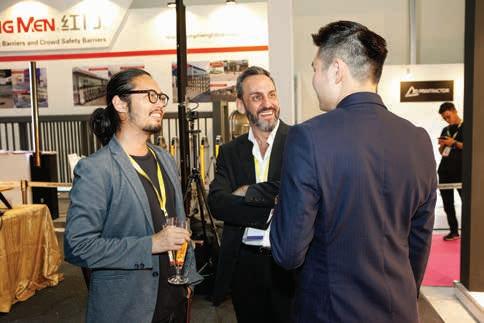
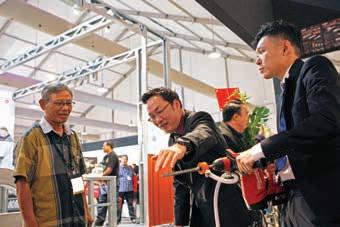

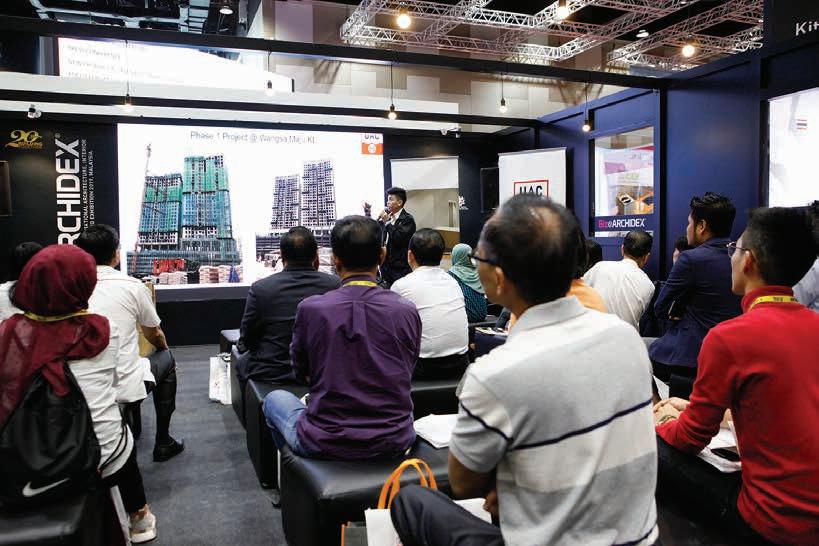


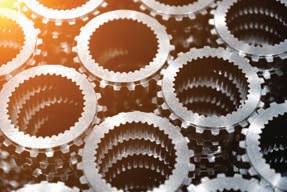


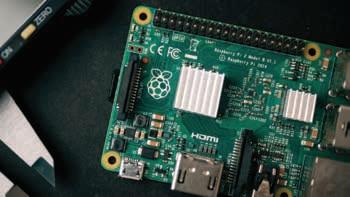

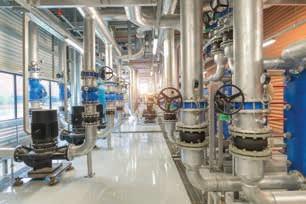
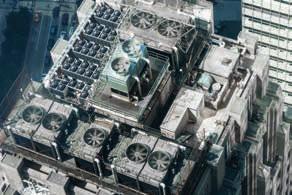
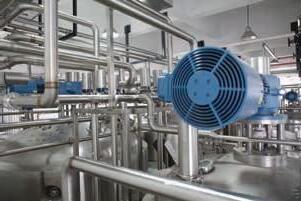

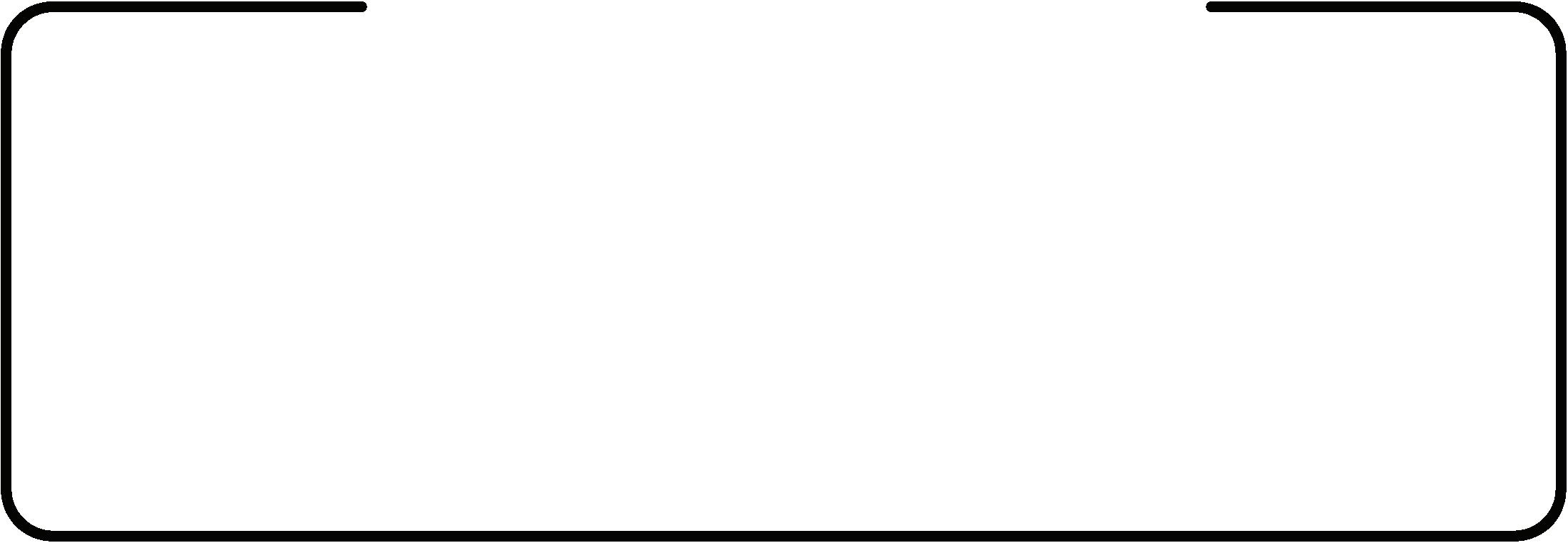

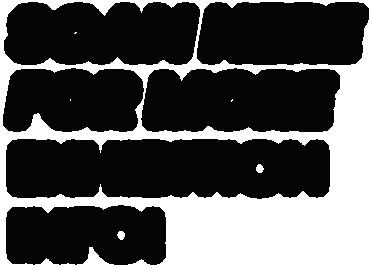
https://bit.ly/3LQL3MJ

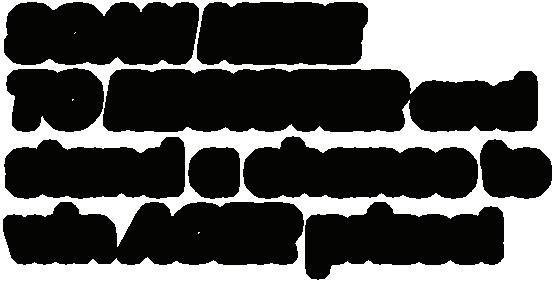
https://bit.ly/3KLf5Ry





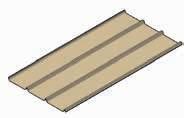
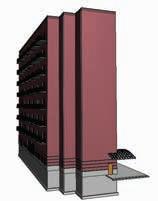
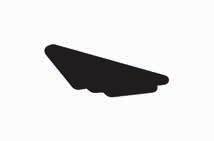

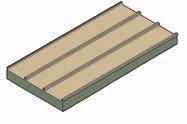
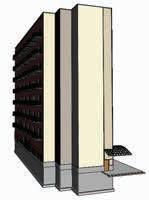
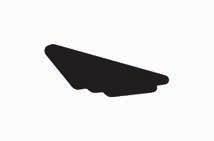
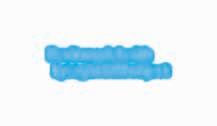
lysaght.malaysia@bluescope.com / lysaght.singapore@bluescope.com facebook.com/lysaghtMYBN / facebook.com/lysaghtsg
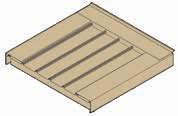
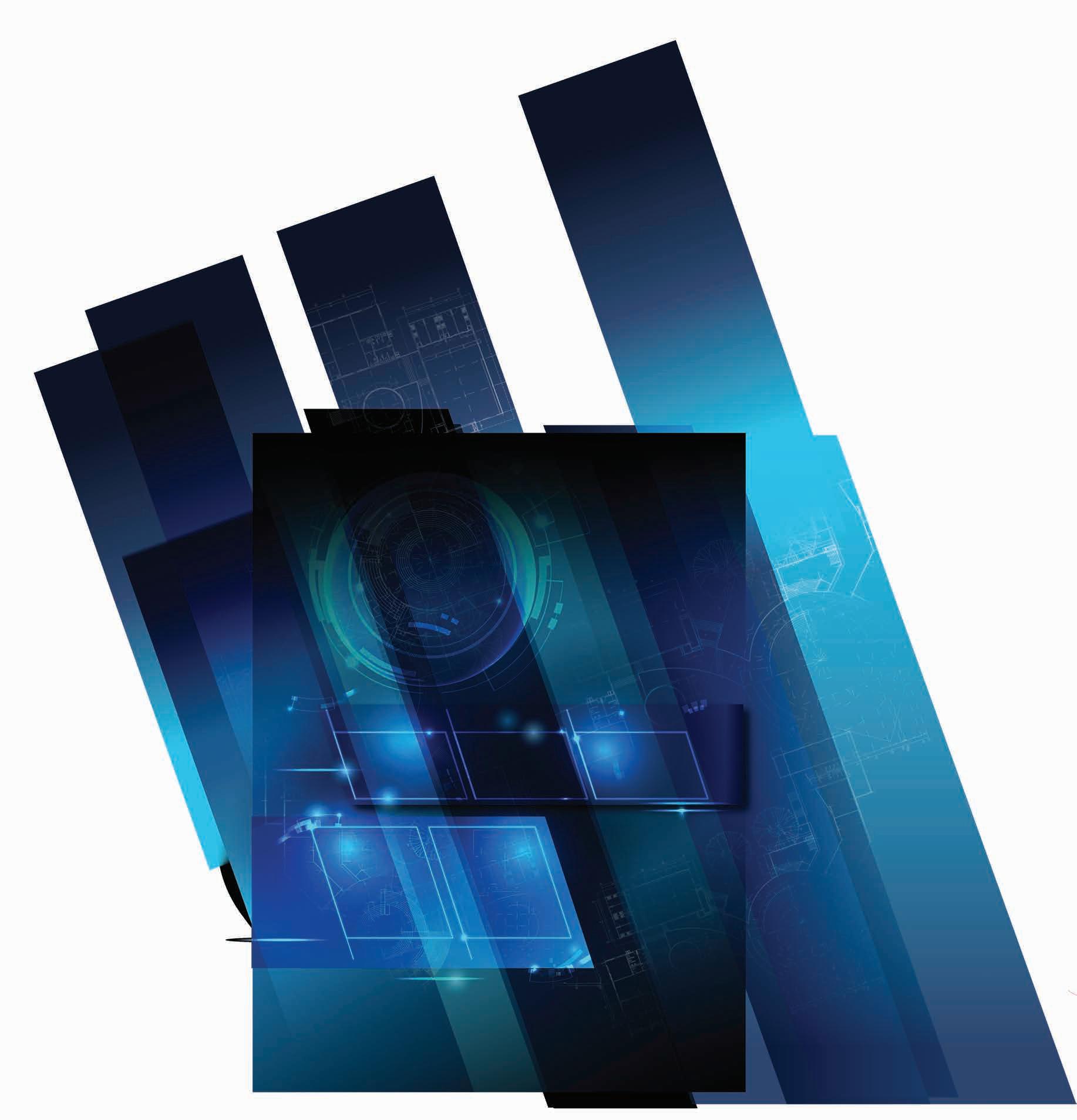
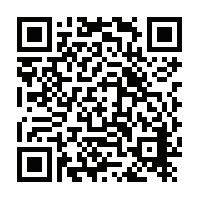
Kepada Semua Ahli,
Tarikh: 9 Februari 2022
SENARAI CALON-CALON YANG LAYAK MENDUDUKI
TEMUDUGA PROFESIONAL TAHUN 2022
Berikut adalah senarai calon yang layak untuk menduduki Temuduga Profesional bagi tahun 2022.
Mengikut Undang-Undang Kecil IEM, Seksyen 3.8, nama-nama seperti tersenarai berikut diterbitkan sebagai calon-calon yang layak untuk menjadi Ahli Institusi, dengan syarat bahawa mereka lulus Temuduga Profesional tahun 2022.
Sekiranya terdapat Ahli Korporat yang mempunyai bantahan terhadap mana-mana calon yang didapati tidak sesuai untuk menduduki Temuduga Profesional, surat bantahan boleh dikemukakan kepada Setiausaha Kehormat, IEM. Surat bantahan hendaklah dikemukakan sebulan dari tarikh penerbitan dikeluarkan.
Ir. Dr David Chuah Joon Huang Setiausaha Kehormat, IEM
PERMOHONAN BARU / PERPINDAHAN MENJADI AHLI KORPORAT
Nama Kelayakan
KEJURUTERAAN ELEKTRIKAL
NORAINI BINTI BAHARUDIN BE HONS (UNITEN) (ELECTRICAL POWER, 2013)
KEJURUTERAAN MARIN
ESVARAN A/L APARAHU BE HONS (UTM) (MECHANICAL-MARINE TECHNOLOGY, 2010)
KEJURUTERAAN MEKANIKAL
AHMAD SAMHAN BIN DAUD BE HONS (UPM) (MECHANICAL, 1999)
YEE CHE HSIEN BE HONS (CURTIN) (MECHANICAL, 2010)
KEJURUTERAAN PEMBUATAN
MUHAMMAD MUKHTAR BIN
NOOR AWALLUDIN BE HONS (IIUM) (MANUFACTURING, 2010) MSc (CENTRAL LANCASHIRE) (LOGISTIC AND SUPPLY CHAIN MANAGEMENT, 2012) PhD (UMP) (2020)
PERMOHONAN BARU / PERPINDAHAN MENJADI AHLI KORPORAT
Nama Kelayakan
KEJURUTERAAN AWAM
MOHD IZWAN BIN HAMZAH BE HONS (UiTM) (CIVIL, 2008)
KEJURUTERAAN KIMIA
CHEW SUET MEI BE HONS (WALES) (CHEMICAL, 2003)
PERPINDAHAN AHLI
No. Ahli Nama Kelayakan
KEJURUTERAAN AWAM
66429 LIM CHE CHUAN BE HONS (UTM) (CIVIL, 2012)
88429 NG JEAT YEE BE HONS (UTM) (CIVIL, 2014)
KEJURUTERAAN BAHAN
88310 MUHAMAD IZWAN BIN ZAKARIA BE HONS (IIUM) (MATERIAL, 2014)
KEJURUTERAAN ELEKTRIKAL
94368 MUHAMMAD AIDHIL BIN SAMSUDIN BE HONS (UPNM) (ELECTRICAL AND ELECTRONIC (POWER), 2016)
65527 MUHAMMAD ARIF BIN JAMAL BE HONS (UTHM) (ELECTRICAL, 2013)
KEJURUTERAAN ELEKTRONIK
18614 RAVINDRAN A/L PUNNIAH @ RAMAN BE (ABERTAY DUNDEY) (ELECTRONIC, 1996) MSc (WARWICK) (ENGINEERING BUSINESS MANAGEMENT, 2007)
KEJURUTERAAN MEKANIKAL
50023 ABANG MOHAMMAD SYAFFIQ IDZUAN BIN RAZAK BE HONS (UPNM) (MECHANICAL, 2012) MMOM (UniKL) (2021)
64840 AHMAD EZAN BIN MUSTAPHA ADV. DIP. (UiTM) (MECHANICAL, 1995)
112790 AL'AZHARINO BIN AHMAD BE HONS (UTHM) (MECHANICAL, 2006) ME (UTM) (FORENSICS, 2021)
87107 ANDY IQBAL BIN AZIZ BE HONS (UTHM) (MECHANICAL, 2013)
69856 CHAW VUI KEN, KENNETH BE HONS (UTM) (MECHANICAL, 2017)
62060 KHO SAN WEI BE HONS (MONASH) (MECHANICAL, 2013)
102265 LOW TSU JIN, KURTWIN BE HONS (MONASH) (MECHANICAL, 2012)
111321 PHUA SEH YONG BE HONS (UTAR) (MECHANICAL, 2013)
38822 SALIKKA A/P LIM CHUNG SENG BE HONS (MALAYA) (MECHANICAL, 2011)
101013 THINESH A/L SUPPAIAH BE HONS (UNITEN) (MECHANICAL, 2014)
54062 WANG WEN JIANG BE HONS (UTAR) (MECHANICAL, 2011)
KEJURUTERAAN SUMBER MINERAL
54546 MOHD SYAZWAN BIN MOHD HALIM BE HONS (USM) (MINERAL RESOURCES, 2010) ME (UniMAP) (ENVIRONMENTAL, 2021)
PERMOHONAN BARU / PERPINDAHAN MENJADI AHLI KORPORAT No. Ahli Nama Kelayakan
KEJURUTERAAN ALAM SEKITAR
30604 FADZLIZA HANIM BINTI ZULKIFLI BE HONS (MALAYA) (ENVIRONMENT, 2006)
KEJURUTERAAN ELEKTRIKAL
59950 CHIENG HENG PING BSc (THE ROBERT GORDON UNIVERSITY) (ELECTRONIC AND ELECTRICAL, 1994) MSc (UCSI) (ELECTRICAL, 2013) PhD (UCSI) (BUSINESS ADMINISTRATION, 2017)
46692 KHAIRUL AZMI BIN MOHD YUSOFF BE (UMP) (ELECTRICAL (ELECTRONICS), 2011)
KEJURUTERAAN MEKANIKAL
79542 FANG WAI HONG BE HONS (UTAR) (MECHANICAL, 2015)
37586 NIK IZZATI ATHEERAH BINTI NIK RAZALI BE HONS (UMS) (MECHANICAL, 2011)
31466 NOOR IDAYU BINTI MOHD TAHIR BE HONS (UiTM) (MECHANICAL, 2010) MSc (UiTM) (MECHANICAL, 2017)
60053 VIJAYAN BATU MALAY BE HONS (UNISEL) (MECHANICAL, 2012)
SENARAI PENDERMA KEPADA WISMA DANA BANGUNAN IEM
Institusi mengucapkan terima kasih kepada semua yang telah memberikan sumbangan kepada tabung Bangunan Wisma IEM. Ahli-ahli IEM dan pembaca yang ingin memberikan sumbangan boleh berbuat demikian dengan memuat turun borang di laman web IEM http://www.iem.org.my atau menghubungi secretariat di +603-7968 4001 / 5518 untuk maklumat lanjut. Senarai penyumbang untuk bulan Januari 2022 adalah seperti jadual di bawah:
NO. NO.
11572 Ir. ABD. MUTHALIB BIN ABD. RAHMAN
09988 MR. KOSHY NAINAN A/L T. K. NAINAN
38039 MR. GOH KHENG WEE
16870 Ir. SAW WOOI KOON
32678 HJ. WAN SALLEHUDDIN BIN WAN ZAKIUDDIN
20425 MR. JUNAIDI BIN JAMALUDDIN
86590 MR. LEE CHEE KIEN
34
39
47
48
49
50
51
53
57
58
59
61
62
65
66
68
69
70
71
72
74
75
76
77
78
79
80
81
82
83
85
CONTINUATION FROM FEBRUARY
PERMOHONAN MENJADI AHLI SISWAZAH
No. Ahli Nama Kelayakan
KEJURUTERAAN MEKANIKAL
113122 MOHD RAZMAN HAZUAN BIN A AZIZ
112813 CHAN FOO KHIN
112820 Dr NG YI CHENG
112715 Dr NURSYAZWANI BINTI ABDUL AZIZ
BE HONS (UMP) (MECHANICAL, 2014)
BE HONS (UMS) (MECHANICAL, 2006)
BE HONS (UNI. OF MINNESOTA) (MECHANICAL, 2010)
MSc (ETH ZURICH) (MECHANICAL, 2012) PhD (ETH ZURICH) (2018)
BE HONS (UniMAP) (MECHANICAL, 2012) MSc(UniMAP) (MANUFACTURING SYSTEM, 2014)
PhD (UniMAP)(MECHANICAL, 2019)
113105 AHMAD SYAFIQ HAQIM BIN SARIP BE HONS (UNIMAS) (MECHANICAL & MANUFACTURING, 2013)
112846 SALEEM AHMAD KHAN BIN NIAZ AHMAD BE HONS (UNITEN) (MECHANICAL, 2013)
113104 AHMAD AZWAN BIN MUHAMMAD ZUHARIMI BE HONS (UNITEN) (MECHANICAL, 2015)
112850 NADARAJAN SAMYNATHAN BE HONS (UNITEN) (MECHANICAL, 2016)
113097 MUHAMMAD SYAZWAN BIN MOHD YUNUS BE HONS (UNITEN) (MECHANICAL, 2018)
112860 DENESH KUMAR BALA KRISHNA BE HONS (UNITEN) (MECHANICAL, 2016)
112869 MUHAMMAD NUR BIN OSMAN BE HONS (UNITEN) (MECHANICAL, 2016)
112873 SANJEVAKUMARRAN ELILALAGAN BE HONS (UNITEN) (MECHANICAL, 2017)
112717 KRISTIAN SURYA DINATA BE HONS (UNITEN) (MECHANICAL, 2018)
112880 ABBAS BIN HARUN BE HONS (UPNM) (MECHANICAL, 2018)
112886 CHONG JUN YAN BE HONS (UTAR) (MECHANICAL, 2018)
113093 TAN JIA WEI BE HONS (UTeM) (MECHANICAL, 2020)
113145 NOOR MUHAMMAD JAMALLUDDIN BIN JUSOH BE HONS (UTeM) (MECHANICAL-STRUCTURE & MATERIAL, 2012) MOSHRM (OUM) (2019)
113109 SYED MUHAMMAD HILMI BIN SYED ABDULLAH BE HONS (UTM) (MECHANICAL, 2014)
113089 EFI ESMAWI BIN ELIAS BE HONS (UTM) (MECHANICAL, 2016)
113117 NOR SHAHARIZAL BIN YUHANI BE HONS (UTM) (MECHANICAL, 2019)
113092 ROAZLAN BIN ISSAHAK BE HONS (UTM) (MECHANICAL, 2020)
112829 RAAM KUMAR A/L KARUPPIAH BE HONS (UTM) (MECHANICALAERONAUTICS, 2006)
113116 MOHD FAIRUZ BIN AHMAD @ IBRAHIM BE HONS (UTM) (MECHANICALAERONAUTICS, 2008)
112807 B.THARUMADURAI A/L VELAYUDHAN BE HONS (UTM) (MECHANICAL, 2013)
112865 JAMALUDDIN BIN ABU BAKAR BE HONS (UTM) (MECHANICAL, 2019)
113107 ADRIAN JOHN SEBASTIAN BE HONS (UTP) (MECHANICAL, 2019)
112879 HAZIQ BIN HAMDANI BE HONS (UTP) (MECHANICAL, 2019)
112870 NUR FARAH AFIFAH BINTI AZMAN BE HONS (UTP) (MECHANICAL, 2019)
112833 MOHAMMAD HAJIB BIN ALI BSc (PENNSYLVANIA UNI.) (MECHANICAL, 2019)
113137 LIM BO YI BSC (PURDUE UNI.) (MECHANICAL, 2020)
112811 MUHAMMAD SYAMIL IKHMAL BIN SAMSULSHAM BSc (PURDUE UNI.) (MECHANICAL, 2019)
113147 SIO KHEN KIONG, IRVIN BSc (RICE UNI.) (MECHANICAL, 2018)
112806 NUR HANIFF PUTRA BIN HANIFAH ME HONS (CARDIFF UNI.) (MECHANICAL, 2019)
112854 KAVENESH GUNASEGARAN ME HONS (NOTTINGHAM UNI.) (MECHANICAL, 2018)
113120 LIM SHENG KHAI ME HONS (NOTTINGHAM UNI.) (MECHANICAL, 2016)
KEJURUTERAAN MEKATRONIK
113144 LAI TUN HAO, CLEMENT BE HONS (UMP) (MECHATRONICS, 2015)
112730 MOHAMAD HAZIM BIN SAIDI BE HONS (USM) (MECHATRONICS, 2018)
KEJURUTERAAN PEMBUATAN
112890 ABU ZAID BIN ABU ZAKIE BE HONS (IIUM) (MANUFACTURING, 2015)
112887 TEE WOOI KEAT BE HONS (UNI. OF MALAYA) (MANUFACTURING, 2011) MSc (UTM)(PROCESS PLANT MANAGEMENT, 2018)
112690 LIM SHIN FONG BE HONS (UNI.OF HERTFORDSHIRE) (MECHANICAL, 2013) ME (UNI. OF MALAYA) (MECHANICAL, 2019)
113095 NIK ABDULLAH BIN ROZALI BE HONS (UNIMAP) (PRODUCT DESIGN, 2011)
112884 MOHAMMAD 'AMIR 'IZZAT BIN MOHD FADZIL BE HONS (UniMAP) (MANUFACTURING, 2016)
KEJURUTERAAN PERTANIAN
112872 Dr NUR AZUAN BIN HUSIN BE HONS (UPM) (BIOLOGYCAL & AGRICULTURAL, 2006) MSc (TEXAS A&M UNI.)(BIOLOGYCAL & AGRICULTURAL, 2016) PhD (UPM)(2020)
KEJURUTERAAN PETROLEUM
113142 NUR NAQIUDDIN MDD NORDIN BE HONS (UNSW) (PETROLEUM, 2019) 113112 DEVRAJ SINGH SIDHU A/L BALDEV SINGH BE HONS (UTP) (PETROLEUM, 2019)
KEJURUTERAAN POLIMER
113139 SITI MARYAM BINTI MANSHOR BE HONS (UniMAP) (POLYMER, 2011)
PERMOHONAN MENJADI AHLI 'INCORPORATED' No. Ahli Nama Kelayakan
KEJURUTERAAN AERONAUTIKAL
112780 HARVINDER SINGH A/L BACHAN SINGH BSc (KINGSTON UNI.) (AIRCRAFT, 2018)
KEJURUTERAAN ELEKTRIKAL
112734 MOHD HAFIZ BIN MAT DAUD BE (UNIVERSITY OF APPLIED SCIENCES AND ARTS IN HANOVER) (ELECTRICAL POWER, 2014)
112781 SAM CHI MING BSc (THE ROBERT GORDON UNI.)(ELECTRICAL & ELECTRONIC, 1998)
KEJURUTERAAN AKITEK NAVAL
113075 BENEDICT LY TOONG HENG ME HONS (NEWCASTLE UPON TYNE UNI) (NAVAL ARCHITECTURE, 2012)
PERMOHONAN MENJADI AHLI 'AFFILIATE' No. Ahli Nama Kelayakan
KEJURUTERAAN ELEKTRONIK
112782 TAN SOO TEIK, ANTHONY BSc HONS (UNI. OF MALAYA) (PHYSICS, 1997)
PERMOHONAN MENJADI AHLI 'ASSOCIATE' No. Ahli Nama Kelayakan
KEJURUTERAAN AWAM
113073 SYED AHMAD FAIRUS BIN SYED ABDUL GHANI DIPL. TECH. (PUO)(CIVIL, 2007)
113074 ZULFIKRI BIN HASHIM DIPL. TECH.(ITM)(CIVIL, 1997)
Note: Continuation would be published in April 2022. For the list of approved “ADMISSION TO THE GRADE OF STUDENT”, please refer to IEM web portal at http://www. myiem.org.my.
Yes! I would like to be a subscriber of The Institution of Engineers, Malaysia’s publications
Name: _________________________________________________________________________________________________________
Mailing Address: _________________________________________________________________________________________________
Country: ________________________
Company/Institution: ______________________________________________________________________________________________
Title: ____________________________________________________________________________________________________
Telephone No: _________________________ Fax: _________________________ Email: _________________________________
New Subscriber Renewal
Please commence my subscription from: _________________________(month/year) Signature: _______________________________
To start your subscription of IEM’s publications, complete this form and mail it back to the address below. For faster processing, fax it to: +603 7493 1047. Thank you.
What is your primary job title?
Corporate Management (including chairman, president, proprietor, partner, director, vice president, general manager, division manager, import/export manager, other corporate title)
Management (including project/contract/equipment/service/transport district manager, clerk of works, other technical or operating manager)
Engineering/Design (including chief engineer, chief designer, civil/ highway/mechanical/planning engineer, other engineering/design title)
Buying/Purchasing (including chief buyer, buyer, purchasing officer, other buying/purchasing title)
Titles allied to the field (architect, consultant, surveyor, research and development professor, lecturer, supervisor, superintendent, inspector or other allied title)
Others (please specify) ____________________________
What type of organisation do you work in? (Tick one box only)
Contractor
Sub-contractor specialist
Design and build contractor
Consulting engineering/architectural/quantity surveying practice
Mining/quarrying/aggregate production company
Petroleum producer
International/national authorities
National/regional/local government
Public utilities (electricity, gas, water, deck and harbour, other)
Manufacturer
Distributor/importer/agent
Construction department of large industrial/Commercial concern
Association/education establishment/research
Construction equipment hire/rental company
Project/construction management consultancy
Others (please specify) _______________________________
What are the main activities of your organisation? (Tick all that apply)
Constructions of:
Roads/bridges

Manufacturer of:
Construction equipment
Dams/reservoirs/irrigation Cement
Harbours/offshore structures Other construction materials
Foundations/tunnels Distribution Pipelines/refineries Construction equipment
Structures/steel work
Construction materials
Building (commercial, industrial) Hire/rental of construction equipment
Housing Design
Construction management Earth-moving/open cast mining
Deep mining Aggregate production
Others (Please specify) _________________________________________
Rate (Please tick)
RM360.00 - 12 issues of JURUTERA
RM84.00 - 2 issues IEM Journal (Half-yearly)
Terms and Conditions:
1) The subscription is to be prepaid.
2) Please make cheque payable to Dimension Publishing Sdn. Bhd.
3) Subscriptions are not refundable.
4) Magazine/s will be sent to the mailing address given.
5) Students are entitled for a 20% discount from the above subscription rate.
6) Students must submit a photocopy of the student identification card together with the payment.
7) The above rate is inclusive of delivery charges and applicable in Malaysia only.
8) Additional delivery charges will apply to overseas subscribers.
For subscription enquiries, please contact +603-7493 1049 or email to info@dimensionpublishing.com
Publisher:
Explore our full set of Professional and Integrated PUBLISHING MANAGEMENT SERVICES:
» Project Management
» Crea�ve Management
» Ad Space Management
» Mailing Management
» Print Management
• Annual Reports
• Booklets • Brochures
• Bun�ngs • Business Cards
• CD / DVD Replica�ons
• Calendars • Cards & Invita�ons
• Cer�ficates • Custom Prin�ngs
• Envelopes • Folders
• NCR Bill Books • Notepads
• Leaflets • Le�erheads
• Paper Bags • Posters
• S�ckers • Others
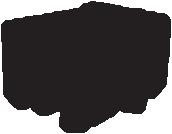



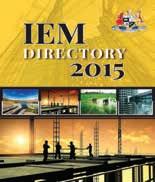
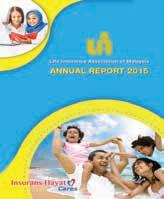
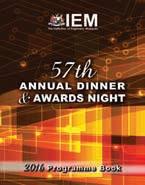

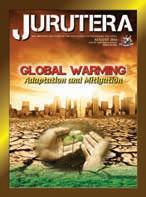
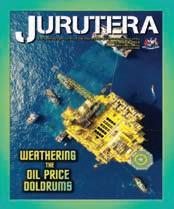


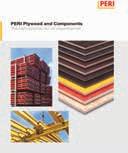






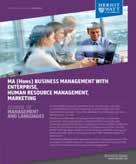

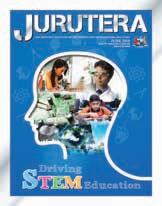






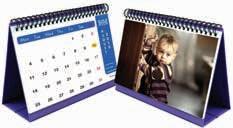









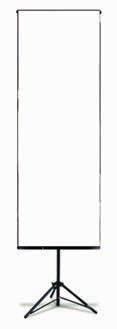
Publishing Sdn Bhd (449732-T)

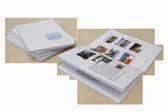
18-01-02, PJX-HM Shah Tower, No. 16A, Persiaran Barat, 46050 Petaling Jaya, Selangor Darul Ehsan, Malaysia.
